The Inspiration
This post may be pretty long. It will detail nearly 40 years of experimenting with building stringed instruments. I have built several banjos, guitars, bass fiddles, and other oddities along the way. I heard Allen Shelton years ago on TNN and also saw him live at a show around Trenton, GA when he was playing with Jim & Jesse. He was playing a 5 string Dobro in the band and I believe a young Mike Scott was playing banjo for them. I talked to Allen after the show about that little Dobro. He was very nice to me and even let me hold it and inspect it. I think this was the beginning of my search for building an instrument that sounded like that little Dobro. By the way, Allen Shelton was recently inducted into the IBMA Hall Of Fame and Mike Scott made the presentation.
To say this was a long search would be an understatement. As a young man with limited resources, I set about trying to build an instrument that had that lonesome sound that I heard from Allen Shelton. These 5 string Dobros could be purchased at that time from some music stores, but I wasn’t impressed with the sound of the one I saw for sale at Clyde Blaylock’s music store at the time. It was made of plywood and didn’t appear well built at all. Plus, I had more time to spend than money. I think the first attempt I made was when Ed James, a friend of mine, gave me a little mandolin that Leon Frazier had given him. The neck was broken in it and I thought I’d make a 5 string banjo neck for it. Here is a picture of a similar mandolin body that belongs to Patsy James.
I don’t have any pictures of the one I made a neck for and I don’t remember what I did with it. I remember it didn’t have much sound in it. These were cheap mandolins that were mostly plywood. After that, I tried making a pot from some everyday items. I remember I made a wooden pot and I used an old car license plate, a pie pan, and several other household items made from aluminum or steel to cover the top of the pot in an attempt to get that tone. I remember making a trip with James Hawthorne to Sand Mountain along about that time and visiting Lonnie Barksdale. He made banjos from aluminum pressure cookers. My trip to his home inspired me to try some different things. He had built some good sounding banjos with just some crude tools and everyday objects. Being young and broke and interested in woodworking inspired me to try a lot of different things. I also watched Roy Underhill’s Woodwright Shop during those years and he also inspired and taught me a lot. I talked to everyone I could find who built and repaired stringed instruments. I also read all I could on this subject. There was no internet at that time and the information available was limited. After the internet came along, I discovered folks like Frank Ford and learned a LOT from them.
The Walloon #1- (below)
Walloon # 2-(below)
Listed above are some pictures of my first serious attempt at making a real 5 string instrument with a Dobro type pot. I ordered a Dobro cone, spider, and cover plate. I built 2 of these instruments. I named this instrument a Walloon. A friend of mine named Jack Dill was always talking about a Walloon. He said if you are out in the woods and hear something you can’t identify, it is probably a Walloon. These instruments had a fairly deep wooden body with the traditional Dobro cone. One of these instruments had rosewood back and sides and the other one was curly maple. These instruments sounded pretty good. They had a deep resonant tone but they seemed to have a lot of reverb in them and seemed best suited for playing slow tunes. The notes seemed to run together on fast songs but they sounded pretty good. Since Allen’s instrument was a Dobro, I thought this was the kind of cone his had in it. It was almost 40 years later when I discovered that the Dobro’s spider bridge was not used in those 5 String Dobros. Sometime in the early to mid 90’s, Ed James, Newell Angel, and I made a recording and Ed played the original Walloon #1 on several cuts. He made it sound great. Here is a cut from that recording.
As you can hear, Ed James made the first generation Walloon sound great. He is a musical genius and has a special touch on anything he plays. These first 2 Walloons were sold or traded off. Warren Cornelius of Townsend, TN now owns Walloon #1 and Slim Johnson of Centre, AL owns Walloon #2.
The 5 String Guitars
I had almost forgotten about cutting down the necks in several guitars years ago. I converted several guitars to 5 strings by cutting down the necks and adding a 5th string. I remember I had a Sherwood Deluxe LARGE bodied guitar that I converted. It had a lot of volume. I sold it on Ebay several years ago. I couldn’t find any pictures of these conversions. You will just have to take my word on these instruments. I think I probably converted 3 or 4 guitars to 5 strings. I remember I sold one to Don Mullis of Chickamauga, GA.
The Wooden Topped Banjos- 2 Holers, 3 Holers, 4 Holers
I have built probably 10 to 15 wooden topped banjos during my lifetime. Some had 2, 3, or 4 holes in the tops and I named them likewise. They all had a unique sound to them. I made some plain and some fancy. Here are some pictures of some of those.
These wooden topped banjos are light weight and have a pretty tone. They don’t have a lot of volume, though. I’ve sold some of them and given some away. These were a part of the learning process that got me to where I am today. I’ve learned something from all these experiments. These tend to be unbalanced somewhat because the neck is heavier than the body. I’ve tried different sized bodies, different depth bodies, different top bracing, different type bridges, different sized holes in the tops, and pretty much anything I could imagine.
The Frog Banjos
Several years ago I had a guitar that I purchased off Ebay. It was a Johnson solid topped dreadnought guitar that had some problems. The braces had been installed at the factory in a too forward position and the bridge had come loose. I was repairing it and managed to burst the top while trying to remove the bridge plate. I had a top that had a large ugly repaired spot in it. I decided to paint something over it to cover up the ugly. I painted a frog on it and covered up the damage. I called this my Frog Guitar. It made a pretty good guitar.
When I decided to make some 5 string instruments and use a National cone and a polished aluminum top, I needed a name for them and I decided to call these instruments a Frog Banjo. I used some frog decals on them. I built 4 of these in 2012. They had a pretty good tone. They didn’t have as much reverb as the first Walloons did. Here are some pictures of some of those.
These Frog Banjos had a National type cone which was suspended from an aluminum top with some machine screws and wooden frames. Looking back, I think that suspending the well and cone from the aluminum top by these machine screws probably isolated the tone to the cone and prevented the wooden part from contributing it’s part to the sound. This configuration worked but it still didn’t really produce the sound I wanted. These bodies were lathe turned and were thicker and heavier than most acoustic bodies. I applied some things I’d learned in my bowl making to these bodies. They were approximately the size of a banjo resonator. They had a decent sound. I gave one to Robert Montgomery and the other 3 ended up being used for parts for other projects. These banjos were another part of the learning process which brought me to what I am writing about now. Now that you have an idea about what I have gone through to get to this point, maybe you can have more appreciation for how excited I am to finally find the sound I have searched for all these years.
The Walloon #3
I recently saw a picture of a 5 string Dobro which was listed for sale on Reverb.com. In the description they said it had a biscuit type bridge on it. This would go along with a National type cone instead of the Dobro spider bridge. Most of these instruments leave the little inch wide chrome cover over the bridge so it is hard to tell much about it from a picture. Now, I don’t claim to be an expert on Dobros but I know what a traditional Dobro pot (with a spider type bridge) looks like and, after building 4 Frog banjos, I know what a National type cone (with a biscuit bridge) looks like. The Dobro cone is oriented like a radio speaker with a spider on top of it which looks like a gas stove eye. The National cone is oriented upside down from what the Dobro is with a biscuit bridge. I assumed years ago that since Allen Shelton’s instrument was a Dobro brand, it had a Dobro Spider cone and cover plate in it. Could I have been wrong all these years about what was inside this little Dobro? Did I put the wrong kind of cone in these first two Walloons? It seemed like putting a Chevrolet engine in a Ford Car. Why would Dobro use a National type cone in these little instruments? There were so few of these made that it is hard to find anyone who has seen inside of one. I talked with Buddy Looney of Lawrenceburg, TN. He worked with my good friend, Rual Yarbrough, for years and I thought he might know something about these instruments. Buddy said he had never had one apart but, that, during those years the National Company was out of business and Dobro was going through a lot of changes. He said that Dobro probably could have used a National type cone at that time without any repercussions from National. This answered some of my questions. So, now I decided to recycle some parts from the Frog Banjos I had around my shop and try to make a 5 string, second generation Walloon with a National cone.
Update: September 18, 2018. Today, I traded for an original 5 String Dobro and I can tell you for certain that it has a National type biscuit bridge cone in it with one exception. This Dobro has a cone that is 9 3/8 inches in diameter, which is 1/8 inch smaller in diameter than the normal National cone. I can only conclude that the Dobro Company made their cone a different size to guard against patent infringement with the National Company or maybe they just wanted to be different. The 5 String Dobro I now own was manufactured in November, 1993 and is signed inside the body by the guy who assembled it. The cover plates on these later ones look different than the one Allen Shelton was playing, though. Allen’s cover plate looked more like an automobile hubcap. Anyhow, after looking inside this one, I verified several things that I didn’t know before. I reworked this 5 String Dobro and got it to sound and play a whole lot better than it did when I got it. I removed the maple stick that was attached to the neck and ran through the entire length of the body. I don’t understand why the designers thought this was necessary. This plywood body is probably strong enough to run a truck over and I don’t think it will have any trouble holding the tension of 5 banjo strings. I reset the neck angle so the strings weren’t so close to the cover plate. I also had to add a spacer (around 3/8 inch thick) between the neck and body to compensate for changing the neck angle. It took me a while to figure out that changing the neck angle and using a taller bridge also made the bridge further away from the nut. There is nothing that sounds worse than a metal finger pick hitting the cover plate on one of these instruments while you are playing. I also removed the little inch wide chrome cover that went over the bridge so I could raise the strings up to a comfortable height for me to play it. I noticed in the picture of Allen Shelton holding his Dobro that it didn’t have this cover over the bridge either. This little Dobro has a slightly deeper tone than these 3 Walloons I have built, but sounds similar to them. Having an original Dobro as a standard gives me something with which I can compare the sound of my Walloons. The sound of these Walloons compares favorably with this Dobro even after I tweaked it (my opinion). Listed below are some pictures of this little 5 String Dobro after I reworked it. I added a pick guard and an armrest to it.
I spent several hours trying to figure out what size to make this second generation Walloon body. I wanted it large enough to center the cone in the body and make it look presentable. Since the bridge is in the center of a cone, it is different from a banjo. I finally settled on a design that centered the cone in the main part of the body with a little curved extension at the neck. I wanted to have full access to all the frets on the banjo neck. The Dobro body is shaped similar to a guitar which means the last 6 frets on the neck are over the body and are hard to reach. I didn’t want a cutaway body. I wanted it to be shaped like a banjo and not a guitar. My Walloon body ended up being about 13 inches in diameter. This left room for the 5/8 inch holes that were cut in the wooden top around the outside area of the cover plate. I also wanted the depth of the sides to be narrow. The first generation Walloons and some of the wooden topped banjos I made had deeper sides and I think that made them harder to reach around to play.
Above is a picture of the form I built to shape the sides. It started out over-sized with 4 layers of 3/4 plywood to allow for my final shaping.
Here is the final form. The end is attached with drywall screws so it can be removed to spread the form and get the sides out after assembly.
I had some mahogany scraps from which I made a neck and end block. I also had some pre-bent mahogany guitar sides that I got from Larry Mathis a few years ago. It worked out that one guitar side was enough to make 2 sides for this project. The final depth of the sides was 1/2 of the width of the narrowest part of a Martin Dreadnought Guitar side less the width of the band saw kerf (approximately 2″). I had to heat them on my bending iron and do some reshaping.
Here are the kerfed linings being installed.
Here is a shot of the sides and blocks with the linings installed.
I had an old beat up Yamaha guitar laying around that was just taking up space. I used a portion of the back for the back of this project. These old Yamaha’s were plywood but it was mahogany veneer and it matched my sides pretty well. So, as Frank Ford says, I introduced it to Mr. Bandsaw and recycled this back.
Here is the recycled back in place.
I used CA glue to attach the back to the sides and blocks.
I had a piece of 100 year old spruce that I got from Bill Neat. It was just barely wide enough to make a one piece top. Of course, most of this top would be cut out for the cone. I had some spruce pieces from a Frog Banjo that I recycled to make the “well”. I had to add extra thickness to them to get the cone to be the correct height.
This piece will make up the wooden “well” that holds the cone.
Here is a shot of the cone setting down in the spruce “well”. This cone was recycled from a Frog Banjo, too. It originally came from my friends at Stype Brothers in Pompano Beach, Florida.
I ordered a National type cover plate from Stewart Macdonald. I reoriented the position so it would be player friendly and so the screw holes would not come out in a bad spot. I drilled some holes and made a simple tailpiece to hold the ball end strings. Later on, (not pictured here), I modified it to use loop end strings like a regular banjo uses. I have found that the size strings used on these instruments is a big factor in fine tuning the tone. A heavier string feels harder to note because is has to be tighter to produce the same note. They also produce more pressure on the cone, changing the way it vibrates. A lighter gauge string may note easier but it may have too shrill of a tone to sound pleasant. I don’t like the shrill tone on the first and fifth strings so I use a heavier string on these strings. Some players may like some lighter strings than I do. I ended up using 12-12-16-23-12 gauge loop end strings. I think Dale Perry ended up using a 10-12-13-21-10 on his Walloon. This comes down to personal preference.
I had a neck from one of my Frog Banjos that I recycled for this project. I had to get some longer lag screws to attach the neck. I also had a Nichols Wooden Armrest from the same banjo pot. I drilled and attached the neck and drilled and attached the cover plate. I used a maple Nichols Bridge that I also recycled. I strung it to see how the neck fit and how tall to make the bridge. I was pleasantly surprised at the sound. After getting the neck centered and fitting and the bridge height established, I disassembled it and did some more final things to the body before I started applying some finish to the pot.
I had to fill the joint where the sides meet to correct some problems there. I used epoxy with ebony dust mixed to darken it. Then I drilled some holes around the top outside of the cover plate. I decided to not use any binding on this pot. I also decided to stain it a dark color to contrast with the shiny cover plate.
I strung it up again and fine tuned the setup.
Here are some pictures of the finishing process. I did not try to make a showpiece out of it since it is only a prototype. The guitar back had some flaws in it but they don’t hurt the sound. Some wood grain filler, some dark tobacco stain and several coats of lacquer were applied to the sides and top. After it dried overnight, I reassembled it.
This instrument represents a lot of years of experimenting and building different things. I’m very pleased with the tone this Walloon #3 produces. It weighs in at 3.6 pounds which is lighter than a lot of acoustic guitars. My experiments through the years started out with a desire to build something that was close to the sound Allen Shelton got from his little 5 String Dobro. In the process, as I got older, I started trying to eliminate some of the weight of these banjos. A banjo takes it’s toll on your back when you have one strapped around your neck and stand and play it (not to mention the strap digging into your back). I have concluded that a banjo does not have to weigh over 11 pounds to sound good. My regular Gibson type banjo weighs 11.5 pounds. I saw an advertisement for a Deering Banjo that was said to be light weight. They said it weighed a little over 8 pounds. I’d assume they removed the 3 pound tone ring. At less than 4 pounds, these Walloons only weigh less than half of what a lot of banjos do. The total depth of this pot is narrow enough (around 2 1/4 inches including the top and back) to reach around easily and it is well balanced weight and tone wise. I don’t expect this instrument to change the world of banjo picking. It has a limited appeal to a select group of pickers who aren’t afraid to try something different (maybe only me). Some of you experts may have noticed my homemade D tuners on this neck. This was an experiment I did a few years back. They actually work pretty well. The top pieces are made from Delrin and it slides really well. Also, I prefer guitar tuners to banjo tuners because they are twelve to one ratio instead of four to one on banjo tuners. Update: November 20, 2018. This Walloon #3 now belongs to Newt Henley of Pikeville, TN. I hope it gives him years of pleasure. This is an ongoing experiment and I hope to make a few more of these in the near future if God allows me to remain here a little longer.
UPDATE: September 13, 2018
I have been busy for a few weeks working on two more of these other Walloons.
Walloon #4: This one has an Indian rosewood back and sides and some re-purposed parts from some previous experiments. It has a curly maple neck with some “luthier tool” inlays that I previously had in a wooden topped banjo. I took some liberties that I would not normally have taken in order to use this neck on this pot. I had to add some wood to lengthen the heel to make the scale work right. This neck was originally in a pot where the fingerboard lapped over the body and was oriented so the bridge was in position like a banjo pot. (not centered on the pot). I also recycled the rosewood back from the wooden topped “3 Holer”. October 13, 2018: This instrument now belongs to Dale Perry, who plays in a band called, David Parmley and the Cardinal Tradition. He seems to share my love for this type of sound. I hope he can use it to enhance his sound on some of the beautiful playing he does. He says he plans to use it on some tunes on his next recording project and also play it on stage some. Here are a few pictures of Walloon #4.
Update- May 9,2021: Dale Perry now plays in a band named “Fast Track”. David Parmley retired and Dale and some other great musicians formed this new band. Dale recently traded this Walloon #4 to me for Walloon #7. It has a deeper body and some other sound upgrades that I believe will suit his needs better. I now own this Walloon again. I’m actually glad to have this neck back since it features some luthier tool inlays on the neck. All these instruments have a slightly different tone to them.
Walloon #5: This body (back and sides) is made from an antique school desk. I re-purposed the wood from this 100 year old school desk. I don’t really know what kind of wood it is. It is light colored and the grain pattern resembles oak but it is not an open grained wood like oak or chestnut. It may be something like gum or some such wood. It seemed to have a sweet smell to it when I was sawing or sanding it and it bent well. I can tell you that it is old wood. I’ll stain it a darker color before I finish it. I’m still experimenting with the sound of these Walloons and attempting to improve them without spending a lot of money on them. My focus at this point is sound and not looks. These 4 prototypes are made strictly to experiment with the sound and are not up to my normal standards for looks. If these work out, I may make a few that really look good with some proper tone-woods. I’m still trying some different cones and other things. I’ll update this site later with some further details. Here are some pictures of Walloon #5 with a neck from another one of the Frog Banjos. There are some pictures here of the finished product and before the finish was applied. Also included are some pictures of the wood from that old school desk. These three 2nd generation Walloons all have a similar tone. There are minor differences but, all in all, they sound pretty close to each other.
I hope you will understand that I’m not suggesting that everyone who owns a banjo should get rid of their banjo and start playing a Walloon. They don’t have the volume that a banjo has and are probably not suited for a large jam session. I have noticed for years that a lot of times when I see a professional Bluegrass Band playing on stage, a banjo player will lay down their banjo and pick up a guitar on certain tunes. I think a banjo is too much for some tunes. I’m just suggesting that this instrument might fill in some of those times when a regular banjo is too loud or too harsh sounding to fit. These instruments, having the shallow bodies, seem to project well and blend with a guitar smoothly. They are comfortable to hold and play because of the narrow depth of the body. They don’t seem to have the problem with too much sustain like the first generation ones did.
Walloon #6
October, 2018: I decided to try making a body out of aluminum. I had some pieces of aluminum in stock that were about .050 inch thick and I fashioned a body from this aluminum plate. The 5 String Dobro has the “well” which holds the cone made from steel. I wondered what the aluminum “well” would do to the sound versus the wooden “well” on the other three I’ve built. It was a challenge to join these pieces together. I welded part of it with an acetylene torch and aluminum rod and used J.B.Weld on parts of it. I used a wooden neck and end block and wooden, kerfed linings. It ended up being a little heavier than the wooden ones (about 4.8 pounds). Here are a few pictures of Walloon #6. I didn’t take any pictures of the construction of this one. I first sprayed some self etching primer and aluminum paint on this body, but I wasn’t satisfied with the look. For some reason, I’ve never had much luck with paint from a spray can. It never dried hard and scratched and marred very easily. I ended up removing the paint and primer and polishing the aluminum body. It has some flaws, but I prefer the polished aluminum look to the fake chrome look of the paint. Here are a few pictures of the finished product. It has a slightly different tone than the wooden bodies. It seems to have a slightly more metallic sound than the wooden ones, but it still has a pleasant tone to it. The first three 2nd generation Walloons had cones that I purchased from Stype Brothers in Florida. I think Paul Stype said these cones were made in Korea. I tried a Stewart Macdonald cone in this one but quickly went back to the Asian made cone I got from my friends in Florida. The Stew Mac cone was not as loud and didn’t have as good a tone in this instrument as the other ones did. There are several other cones on the market and some of them are pretty expensive. I haven’t tried any of those cones yet. It is possible that one of these other, more expensive cones would sound better than these I’ve used. This is just an experiment. You never know what something sounds like until you try it. I have learned that it is best to have at least 2 instruments which are close to the same so you can compare the sound in real time. You play one and lay it down and immediately pick up the other one and play it. This way you can more easily tell if something sounds different. Some of the National guitars were made with metal bodies, too. I think they made some with steel and some with brass bodies. I used the aluminum because I’ve always thought aluminum produced a good sound (and because I had some in stock). The polished aluminum looks similar to the chrome cover plate. Update, December 1, 2018: I’m now proud to say that this aluminum bodied Walloon #6 now belongs to Ed James of Birchwood, TN. He has always been an adviser to me on any instruments I have built. His input has helped me a lot through the years. A musician of this caliber has the ability to hear things that I would miss. I think he has the unique ability to get the sound from it that it deserves to make. As of the end of October, 2018, I have built 4 of these 2nd generation, newer style Walloons (3 wooden and one aluminum one). I’m not through experimenting with this concept. I have some more ideas that I intend to explore on these things.
The Videos made with Walloon #3
I took Walloon #3 to my friend, Ed James’s, house and we made some videos of the sound with him playing it. Of course, he could make a gourd sound good with his superb talent. Here are some YouTube links to eight videos that we made with this Walloon #3.
![]()
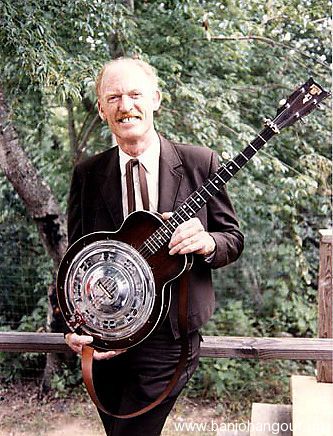
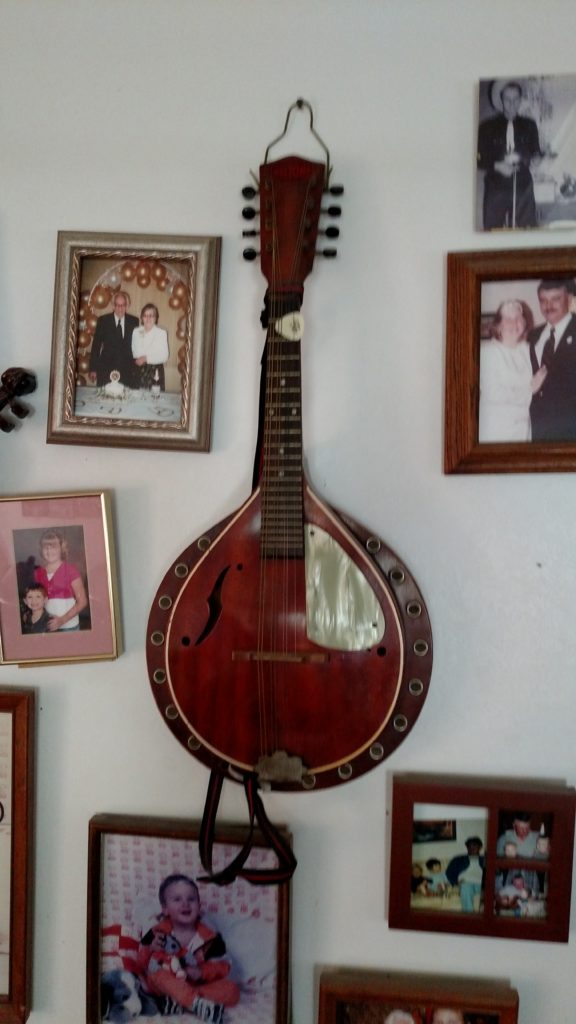
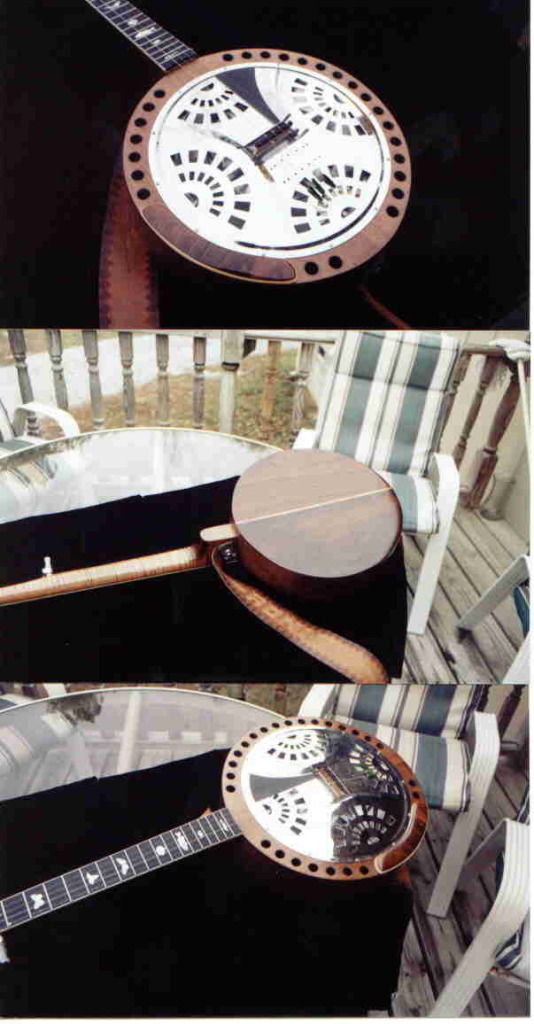
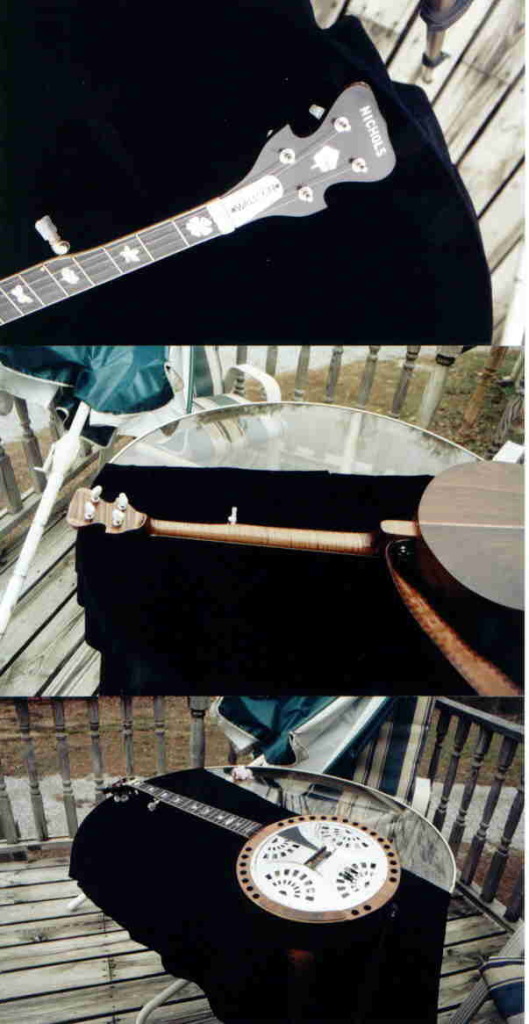



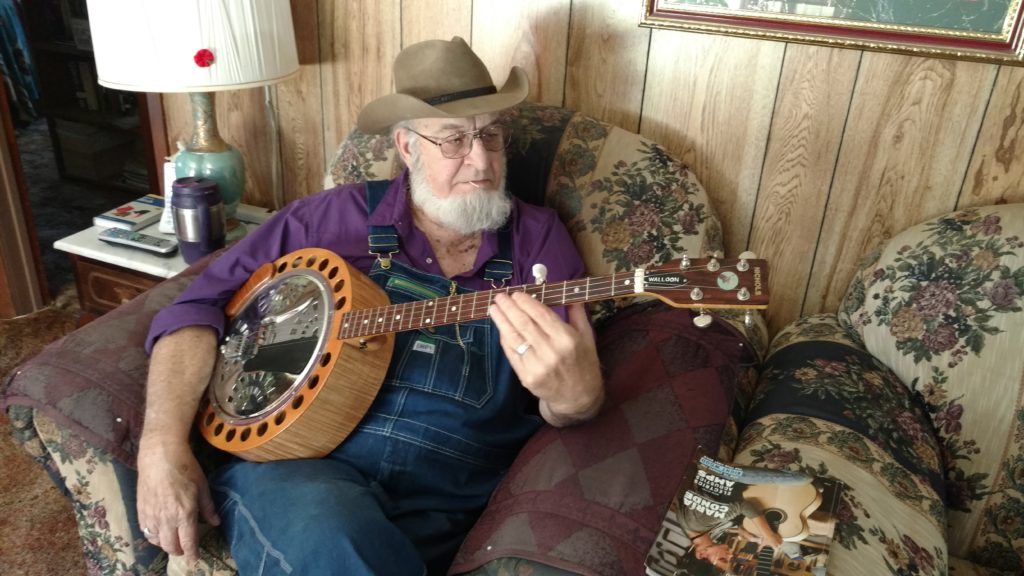
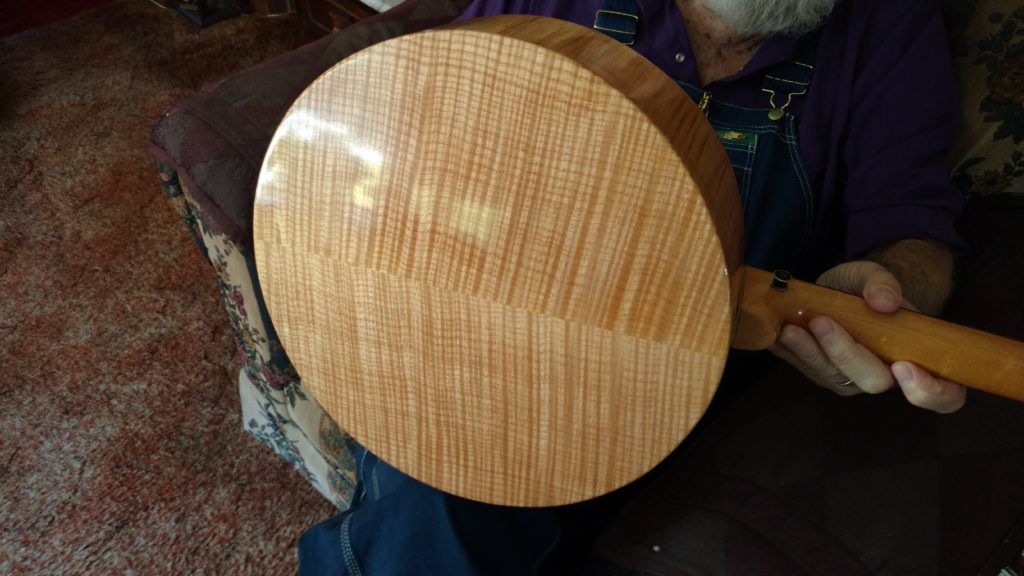
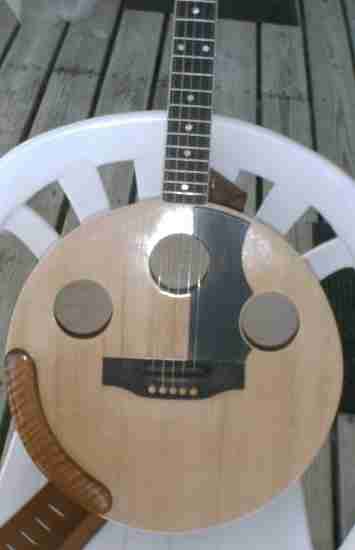
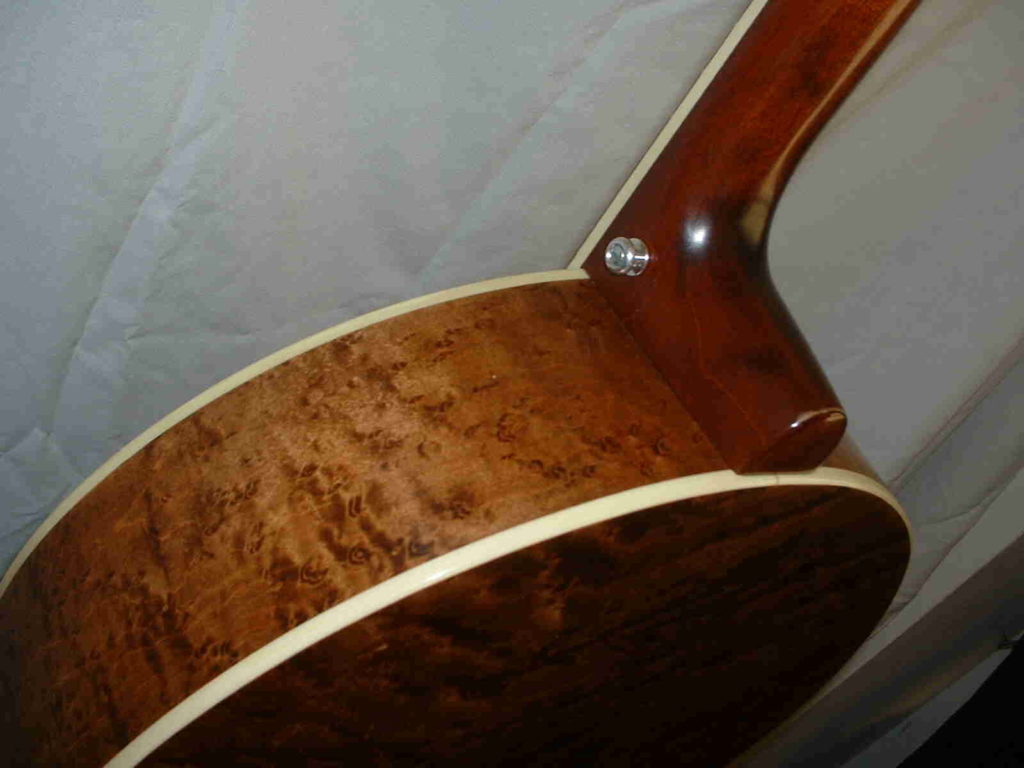
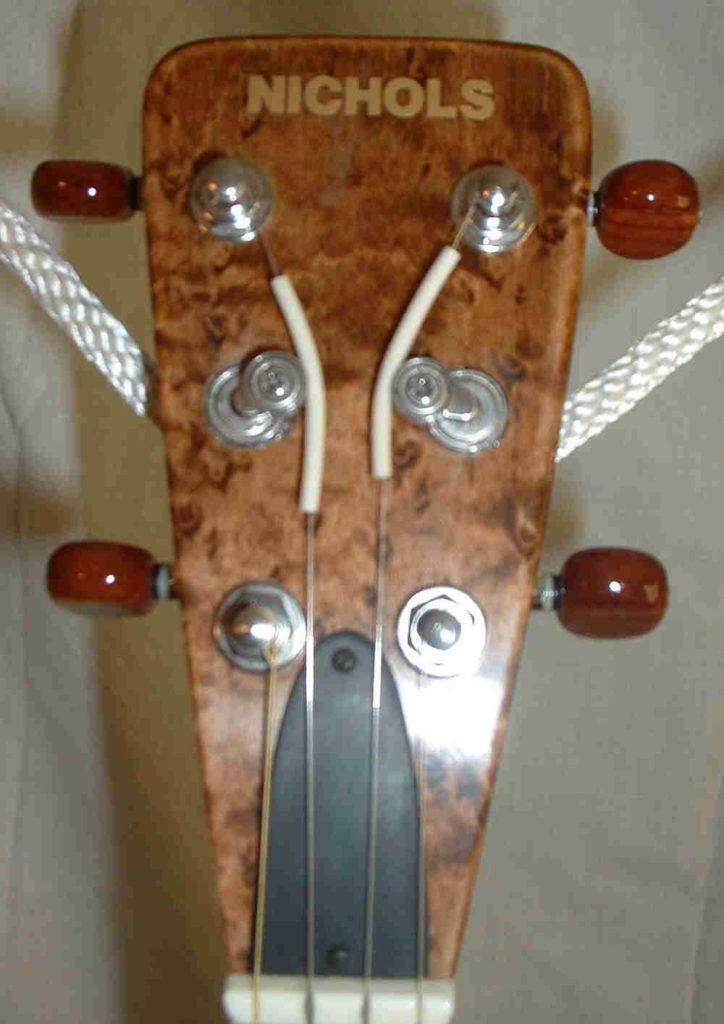
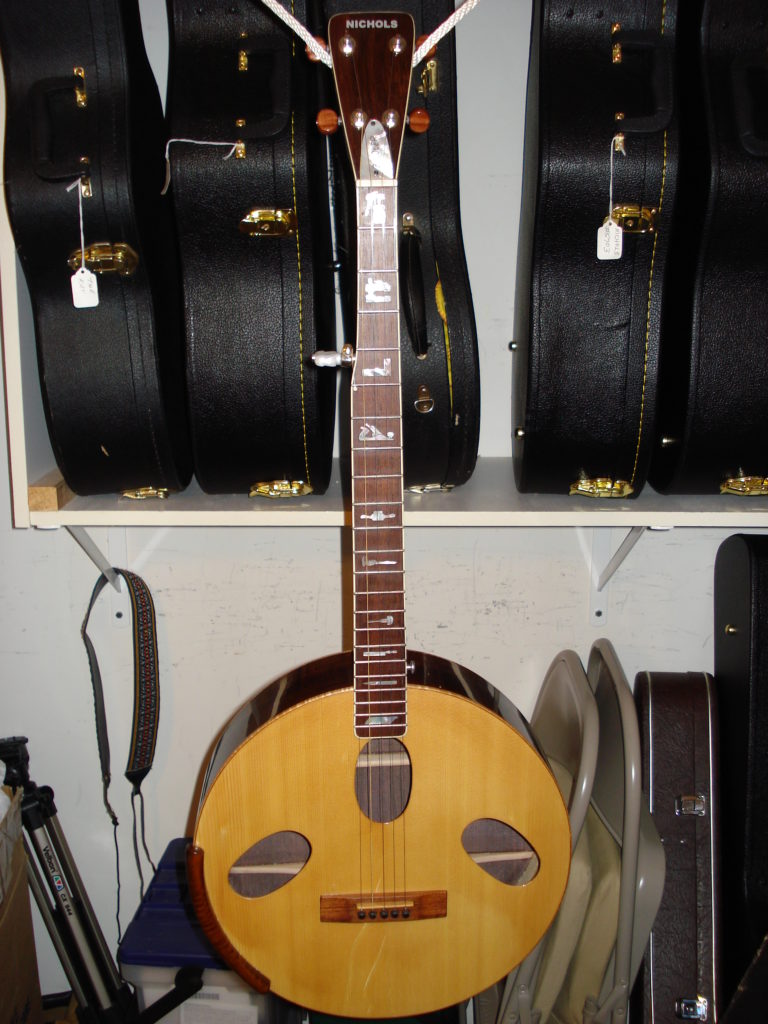
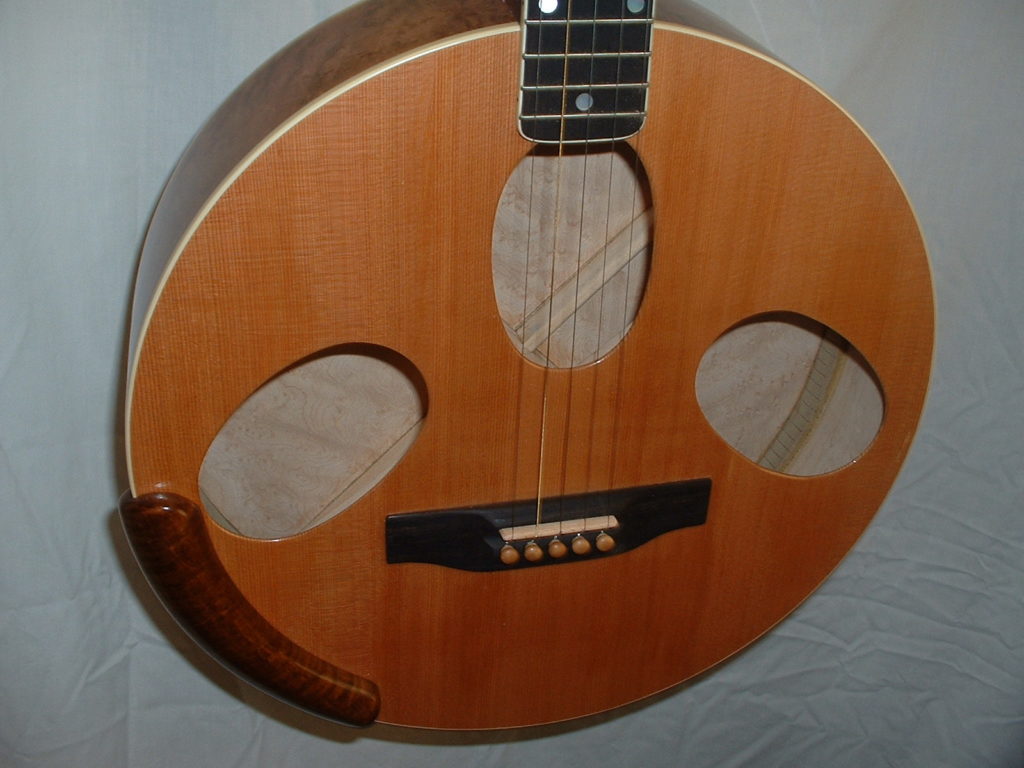
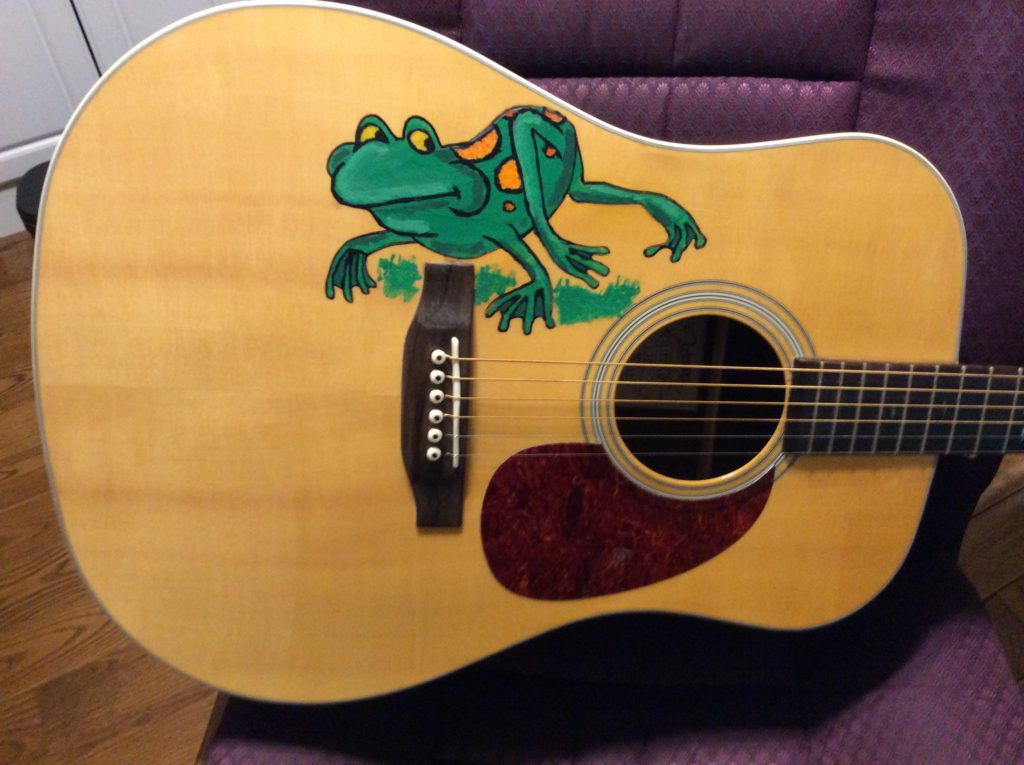
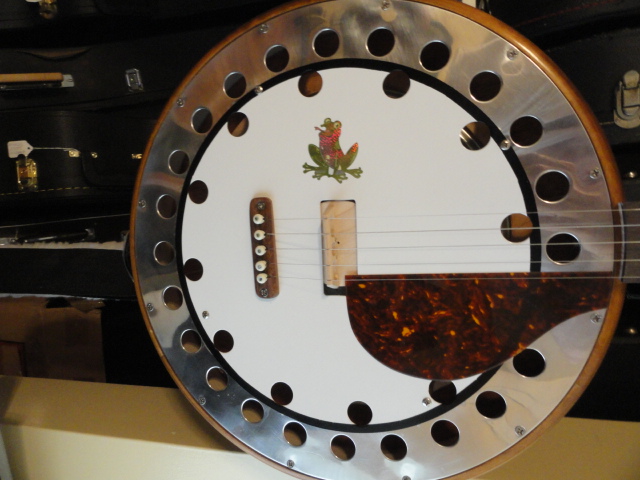
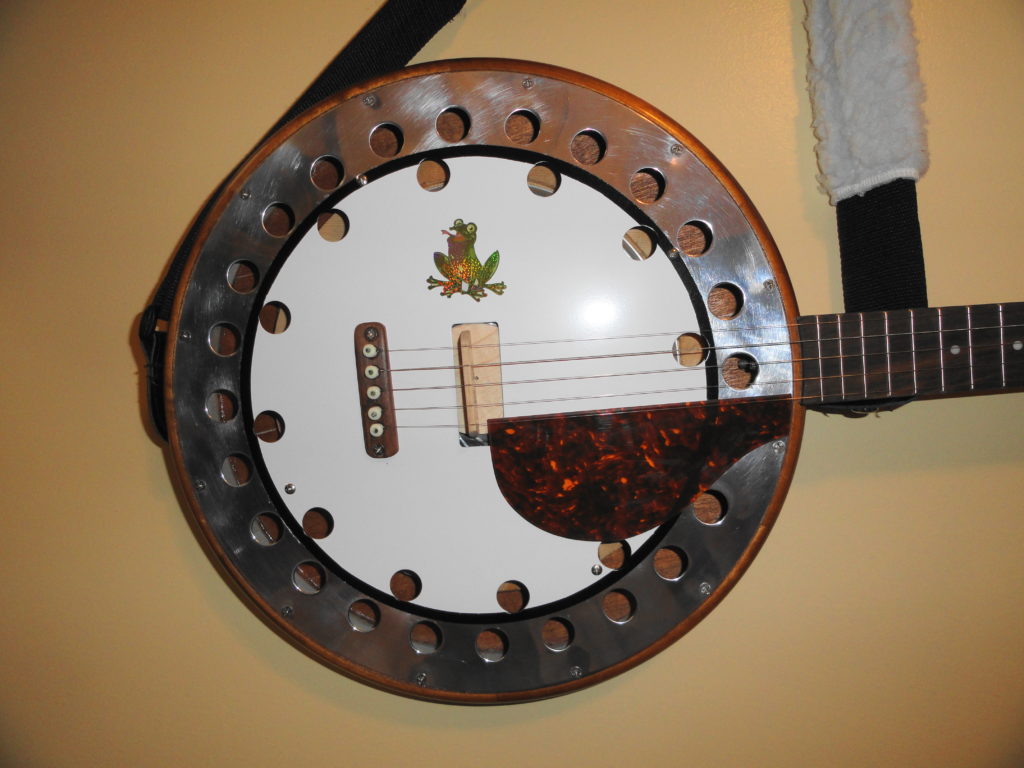
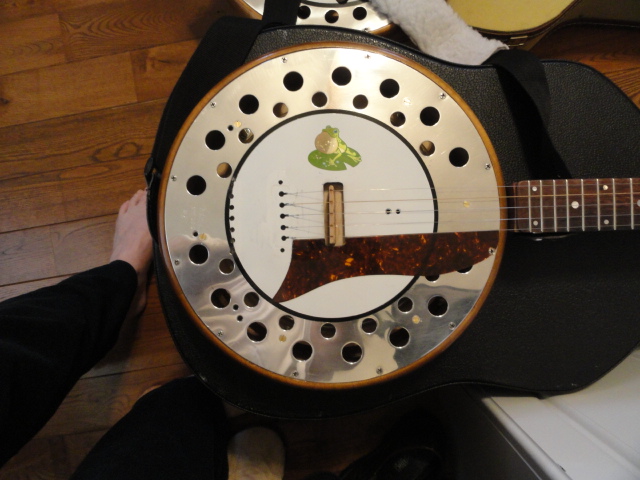
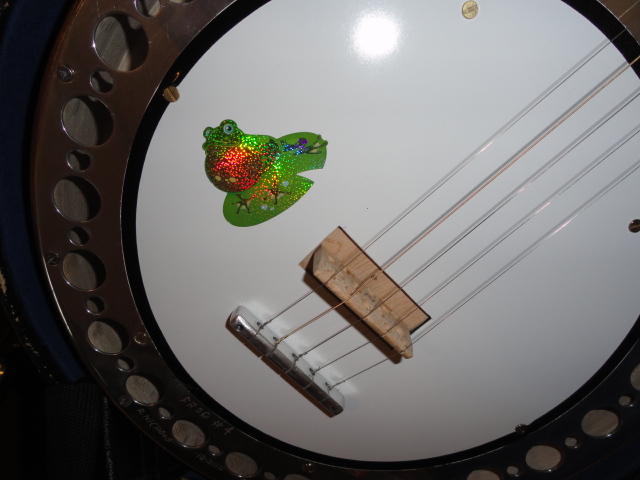
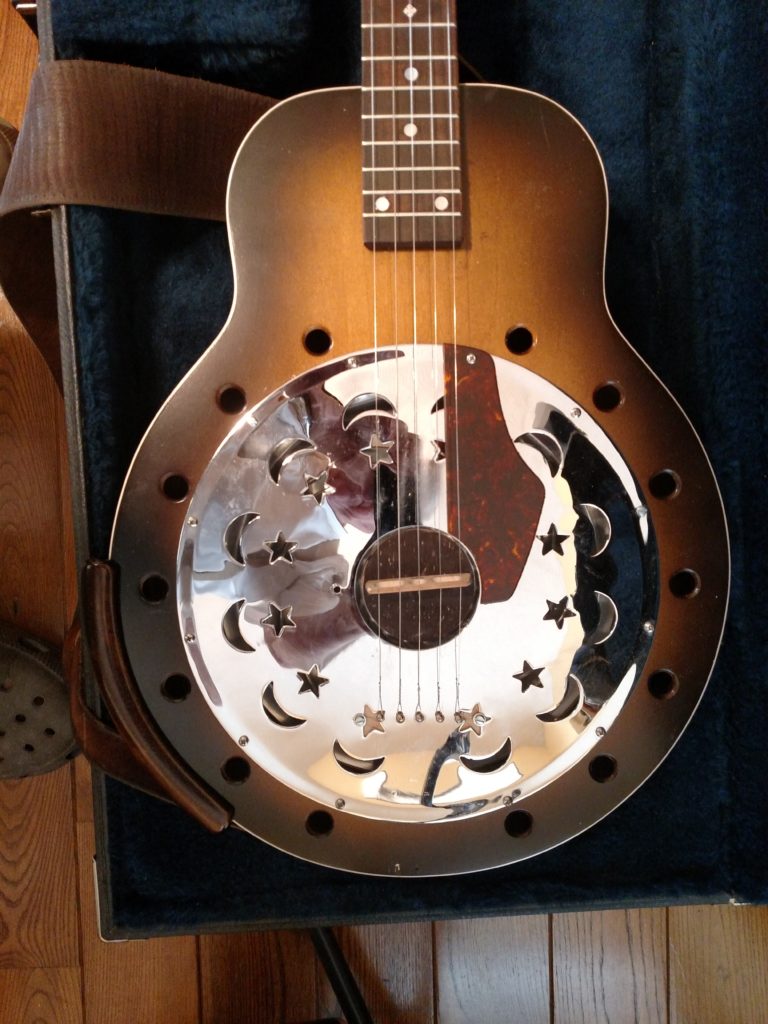
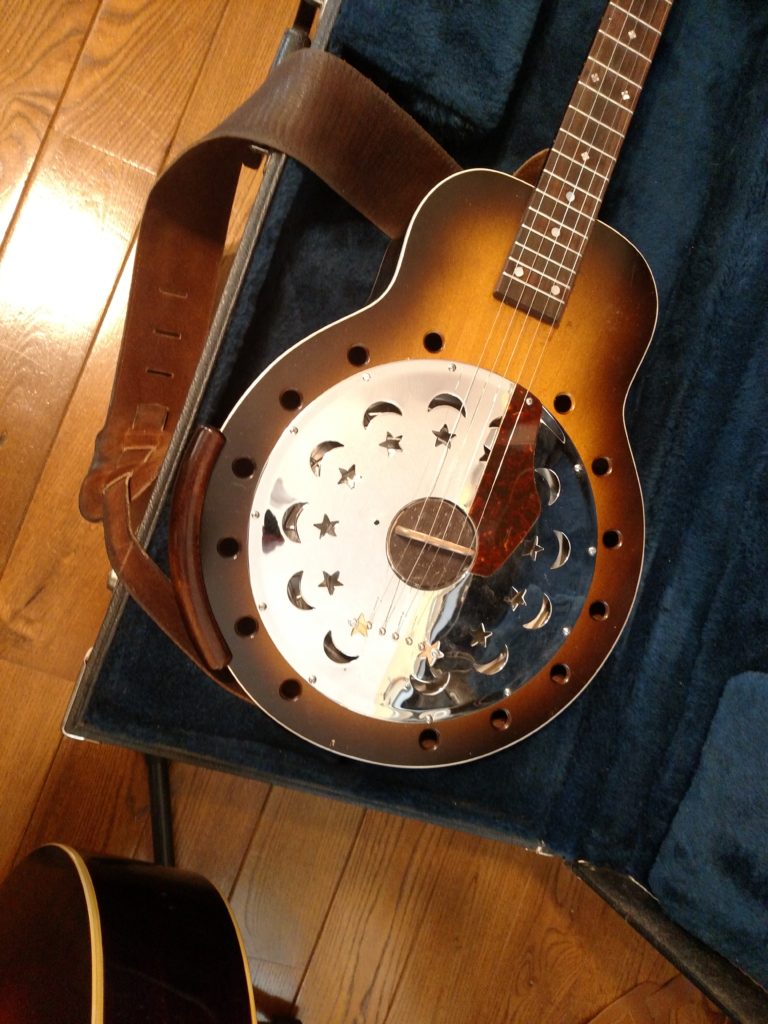
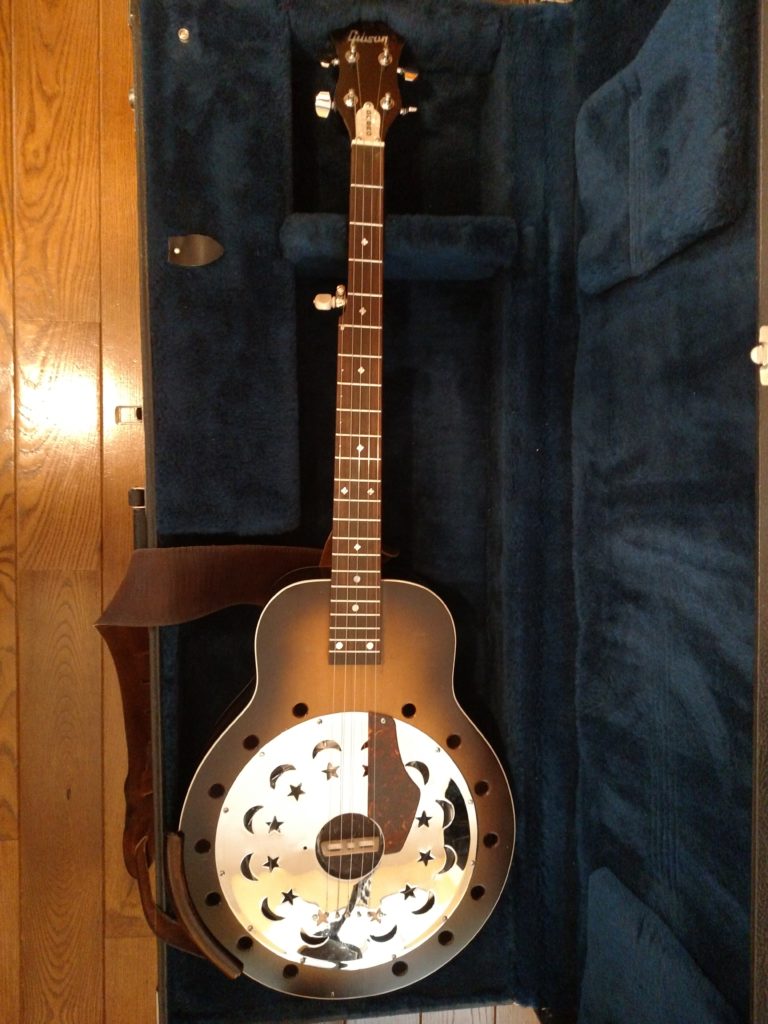
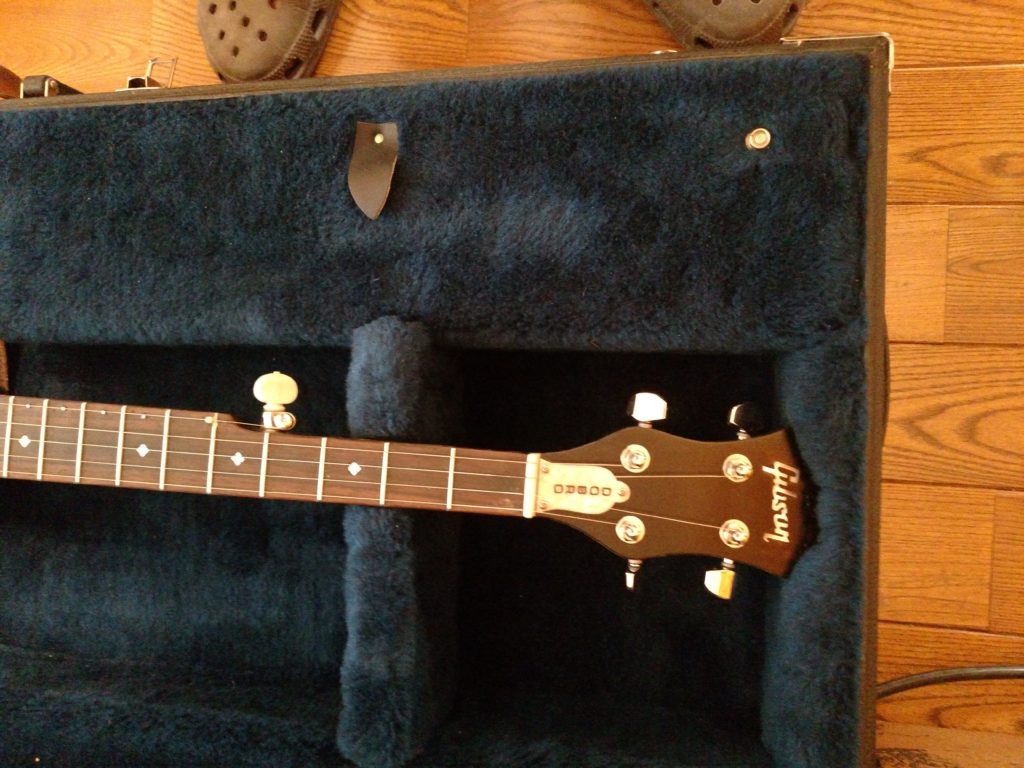
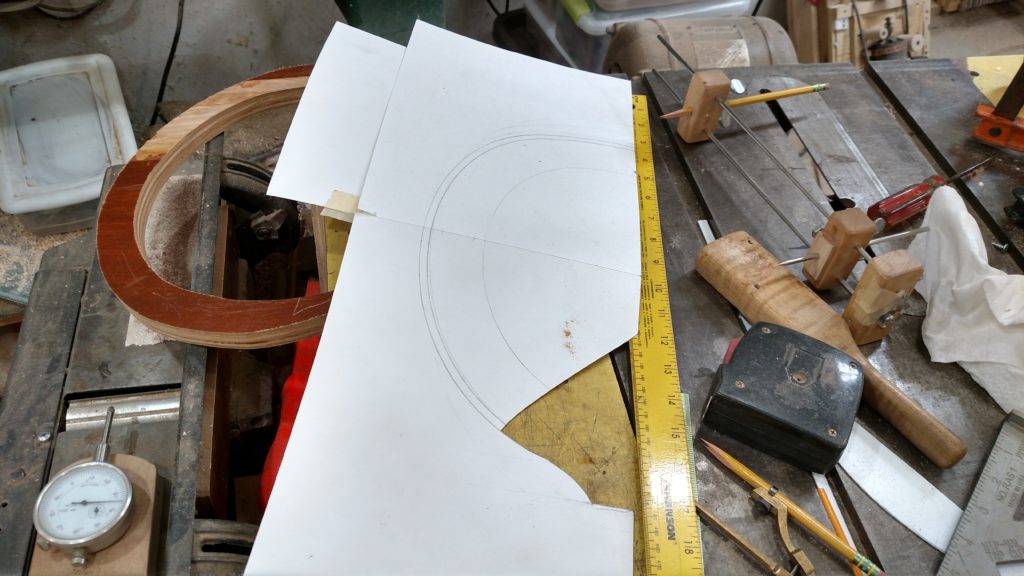
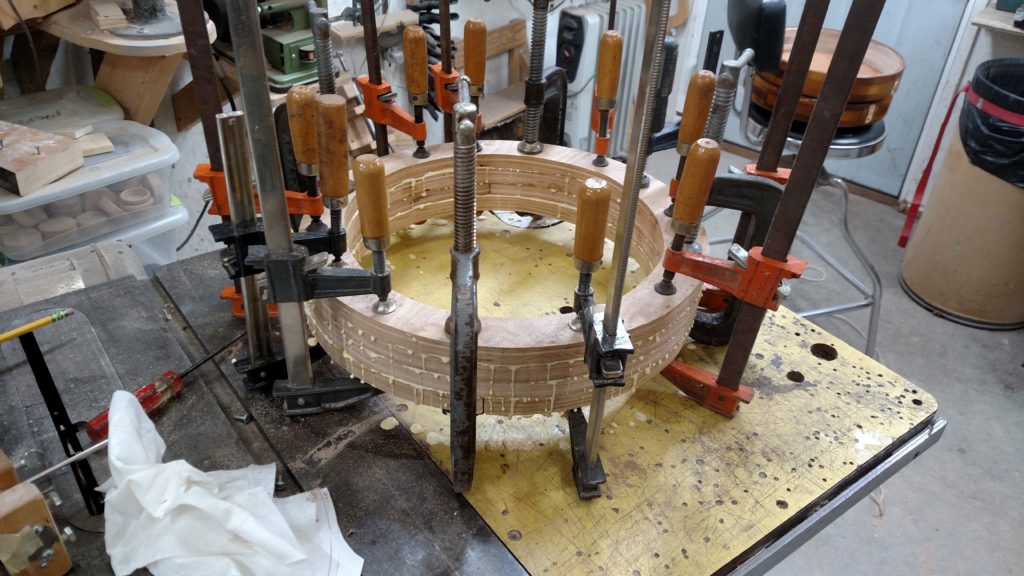
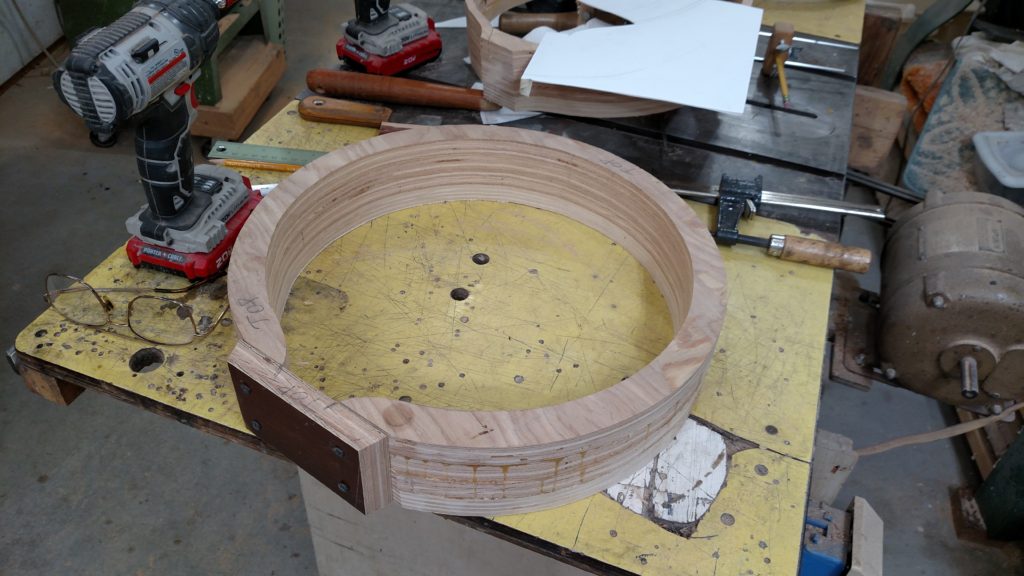
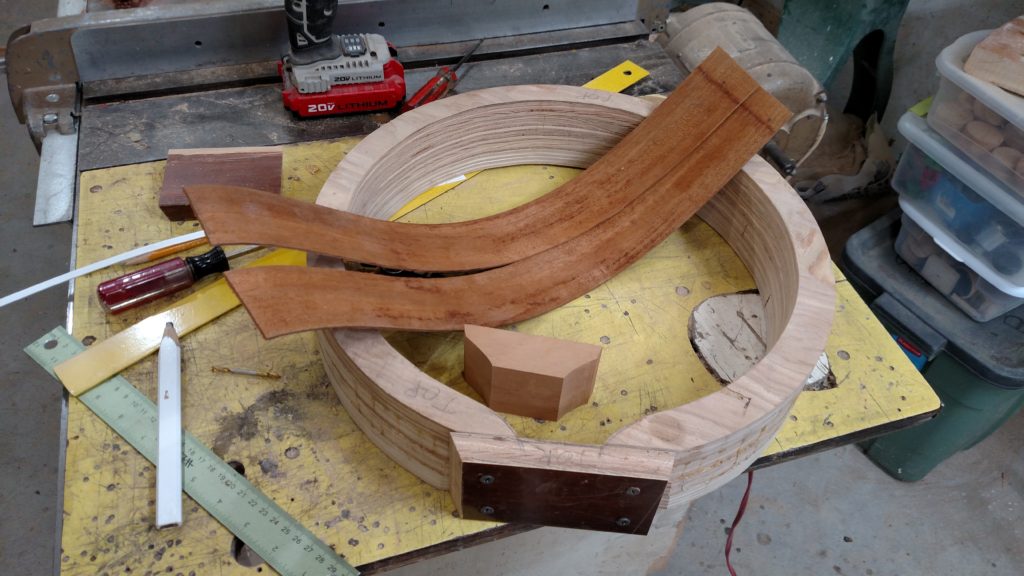
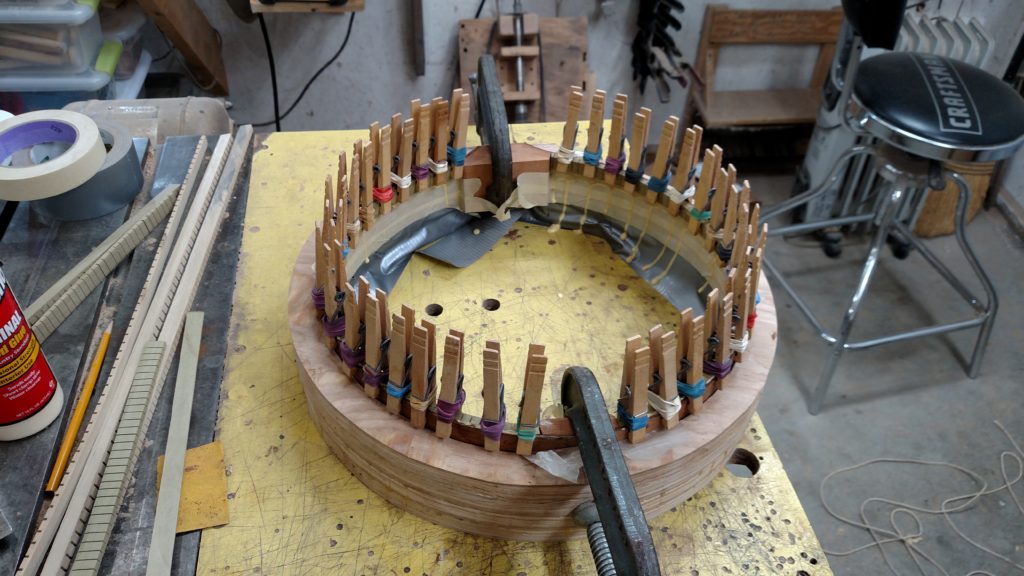
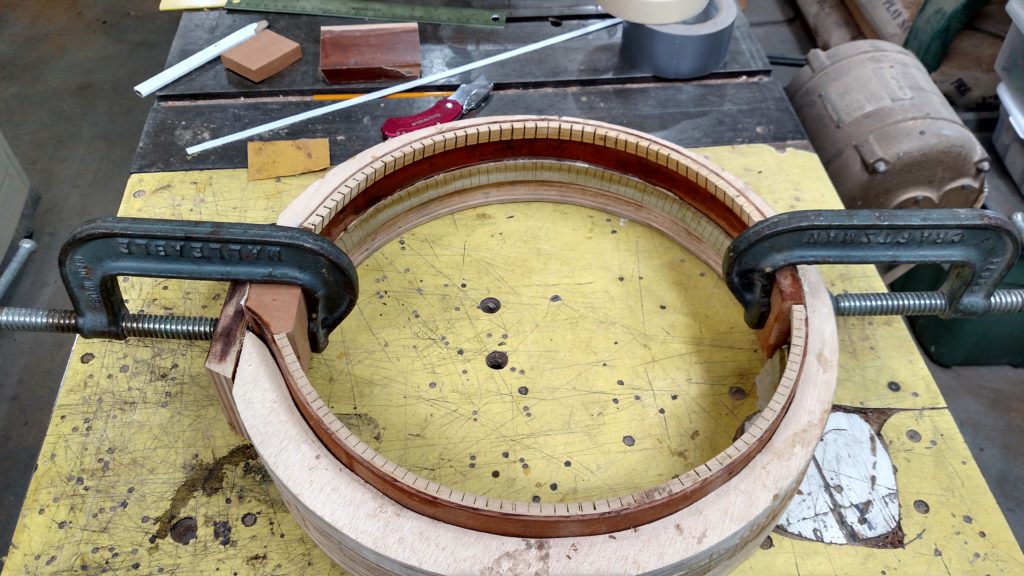
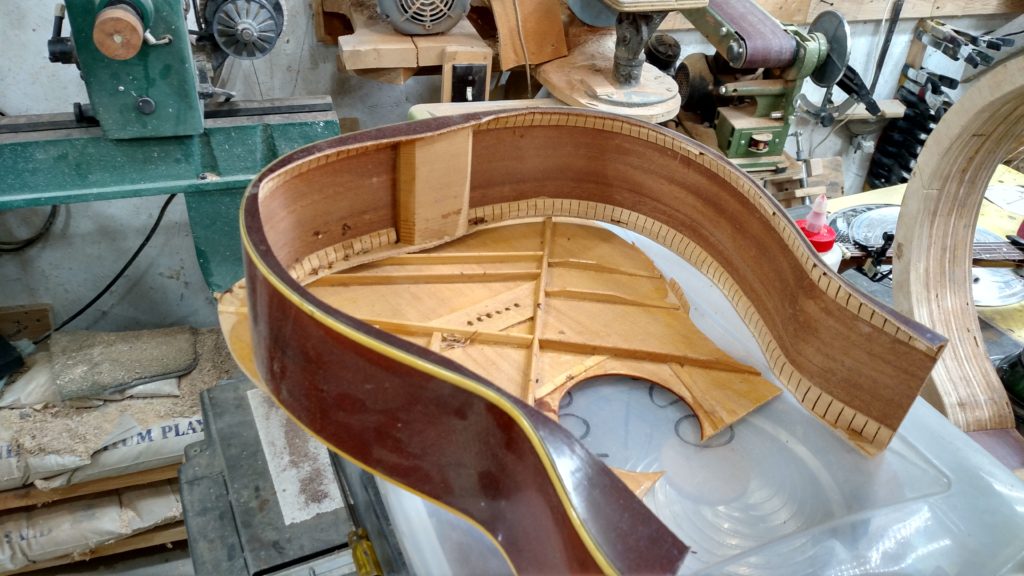
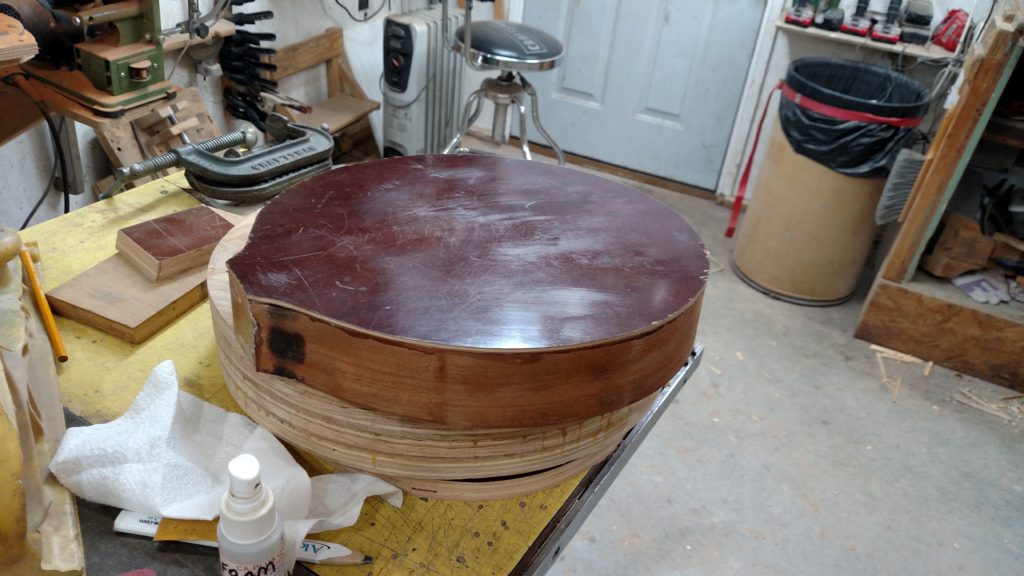
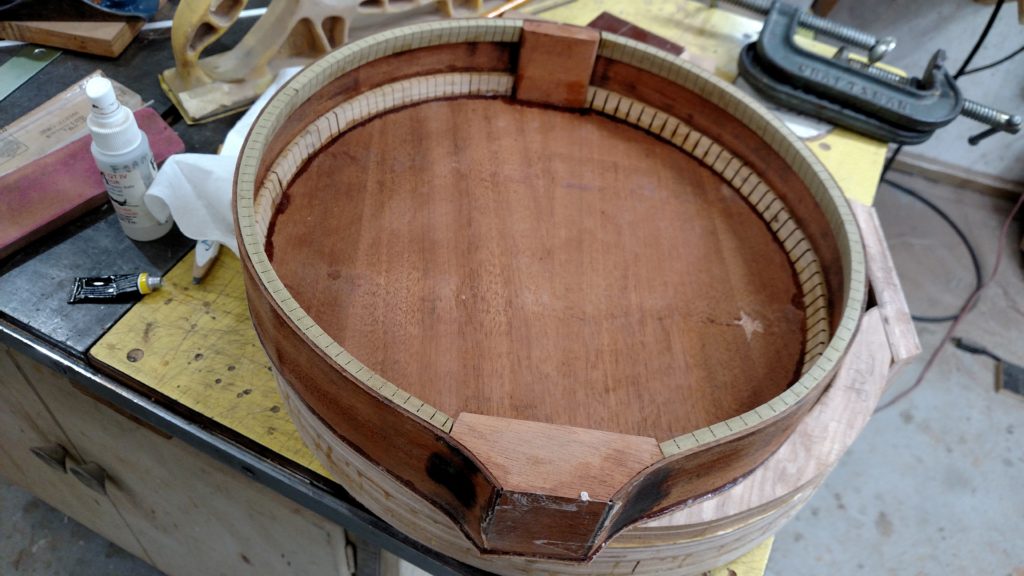
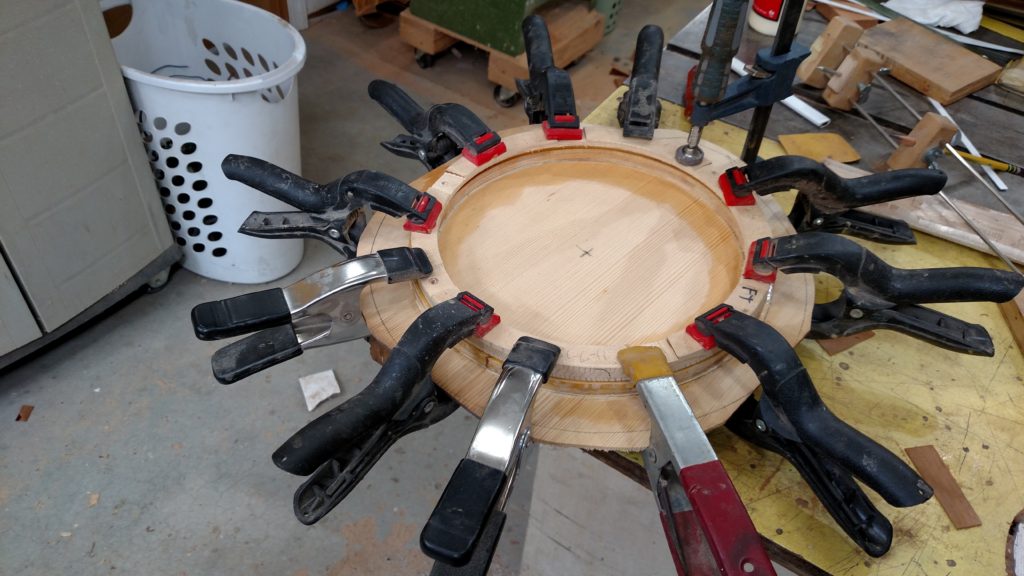
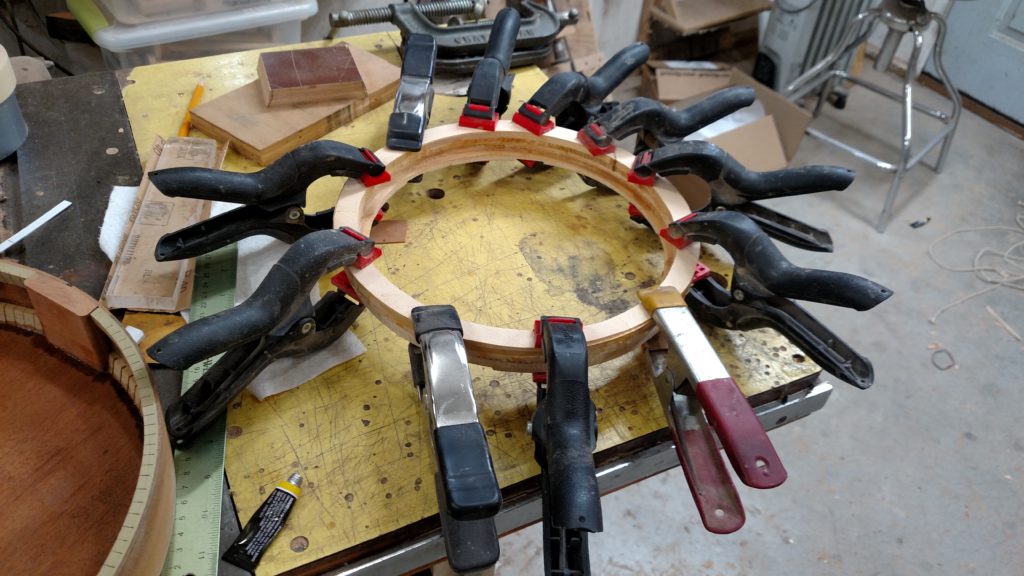
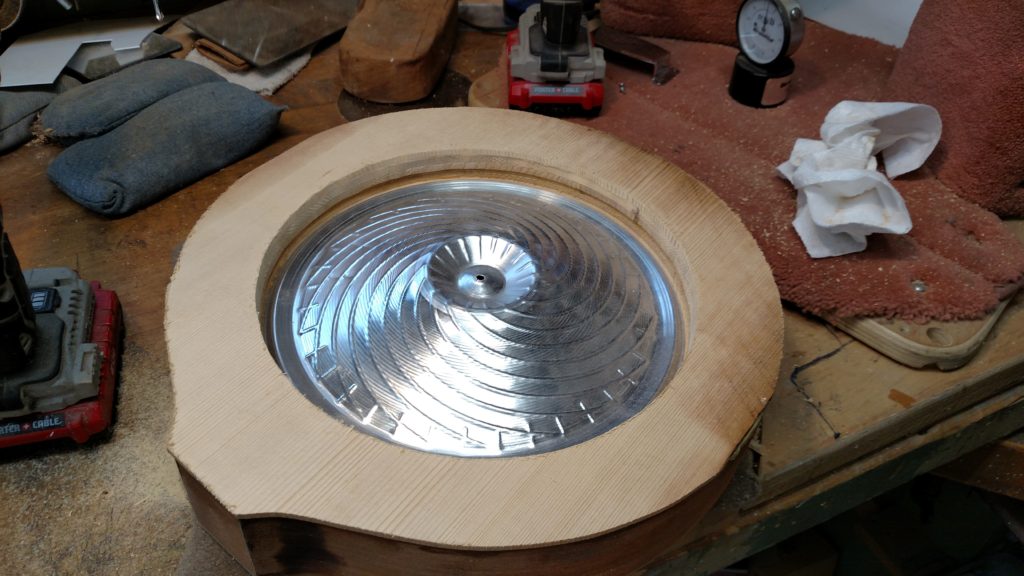
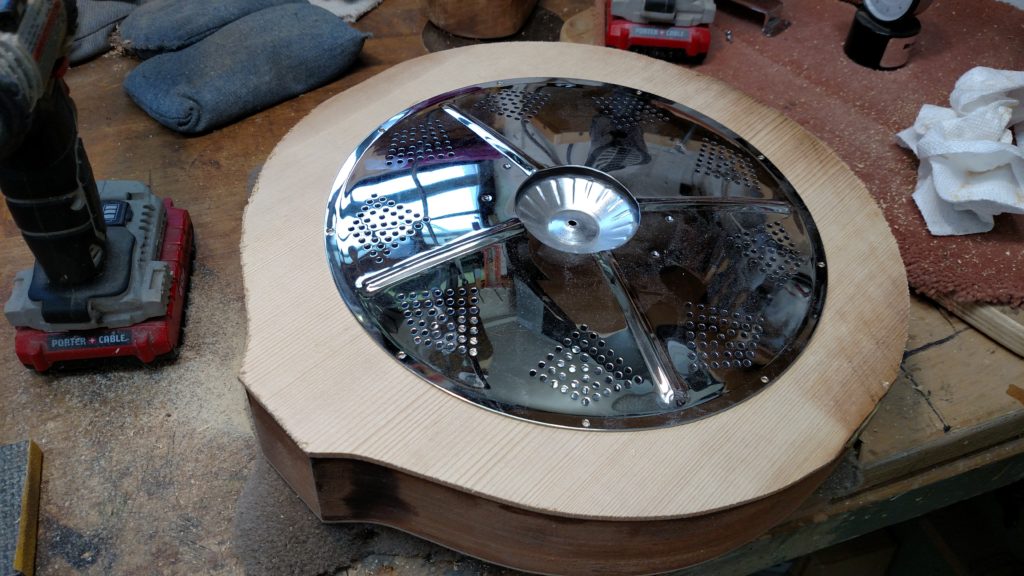
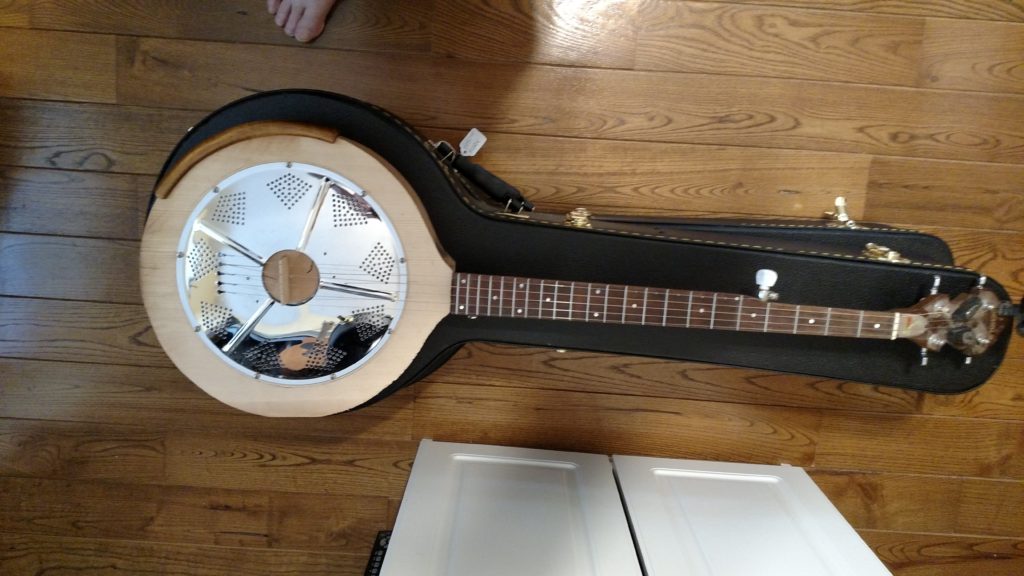
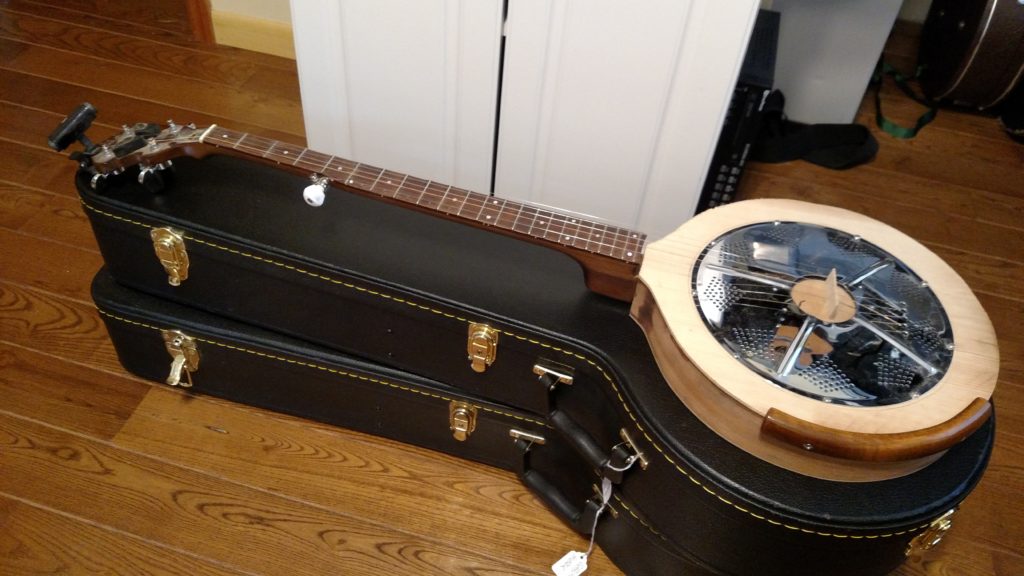
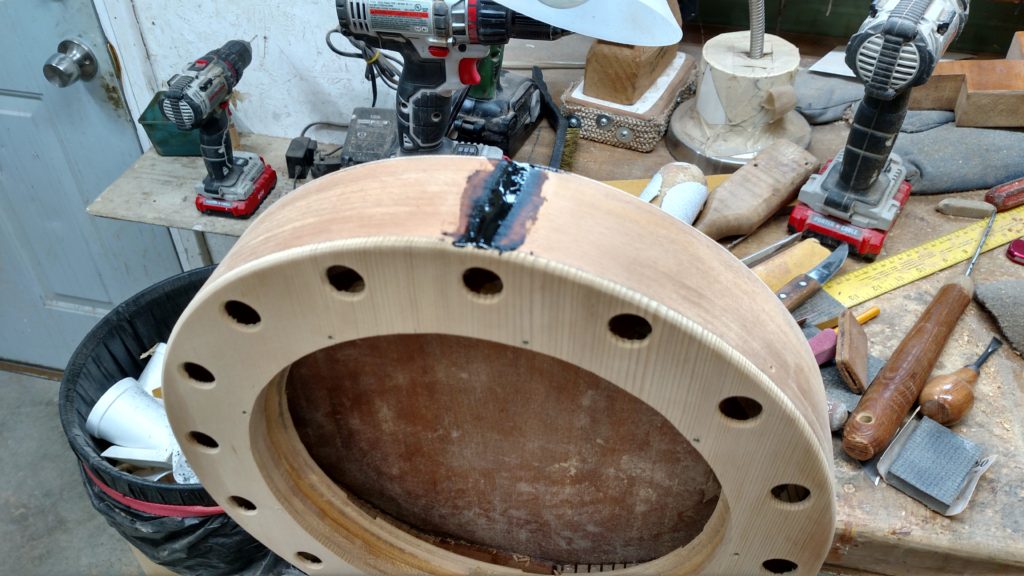
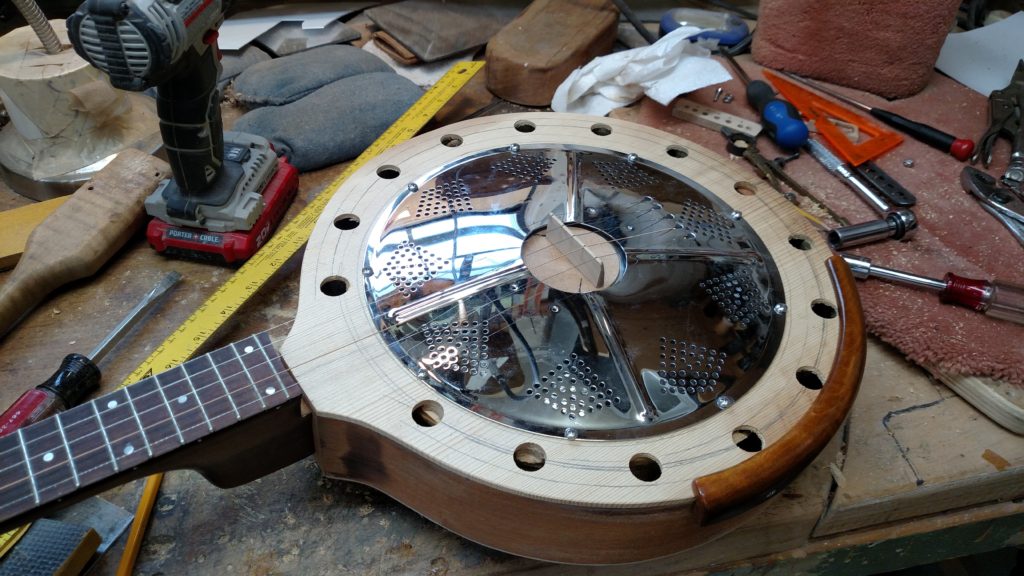
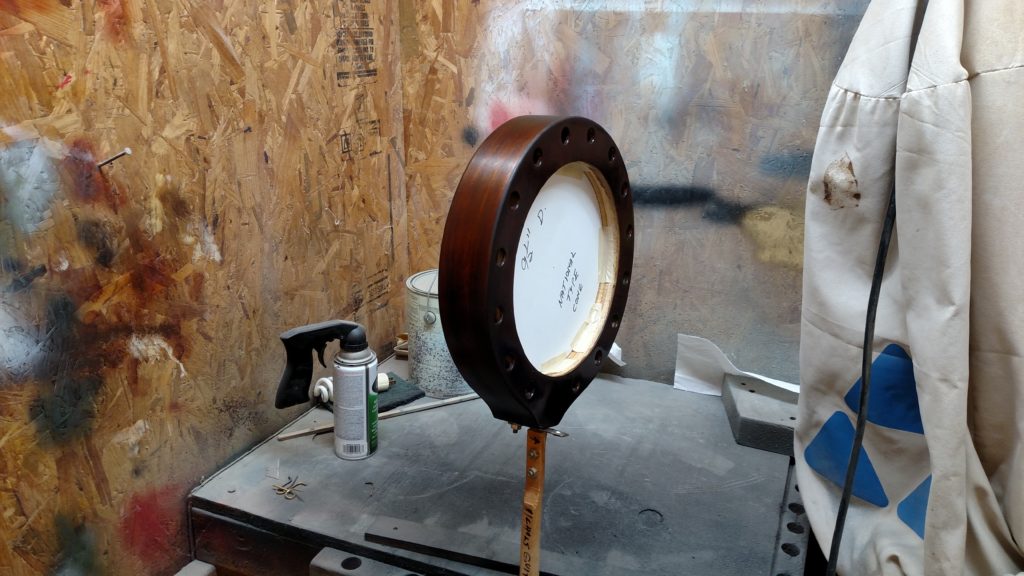
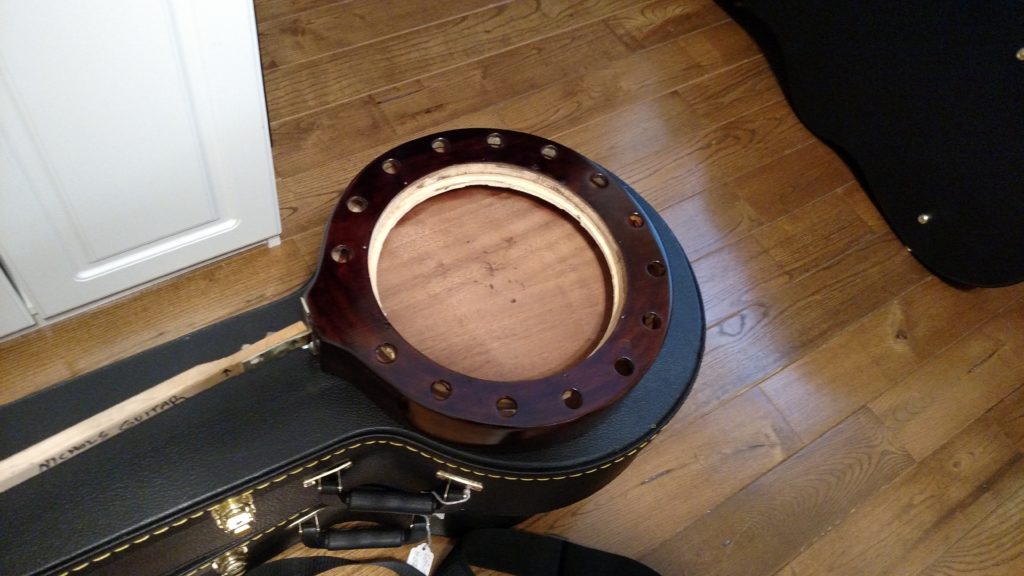
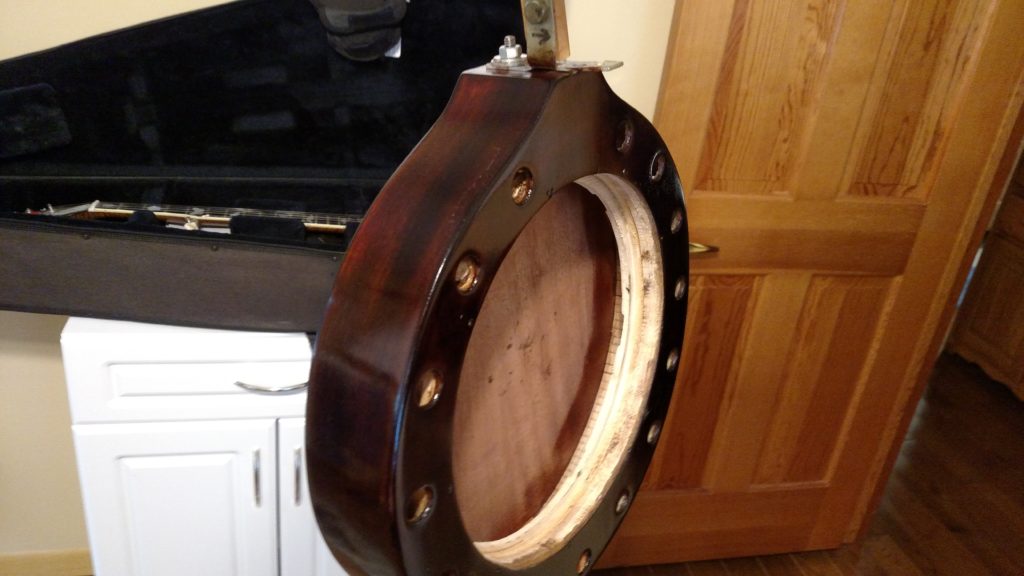
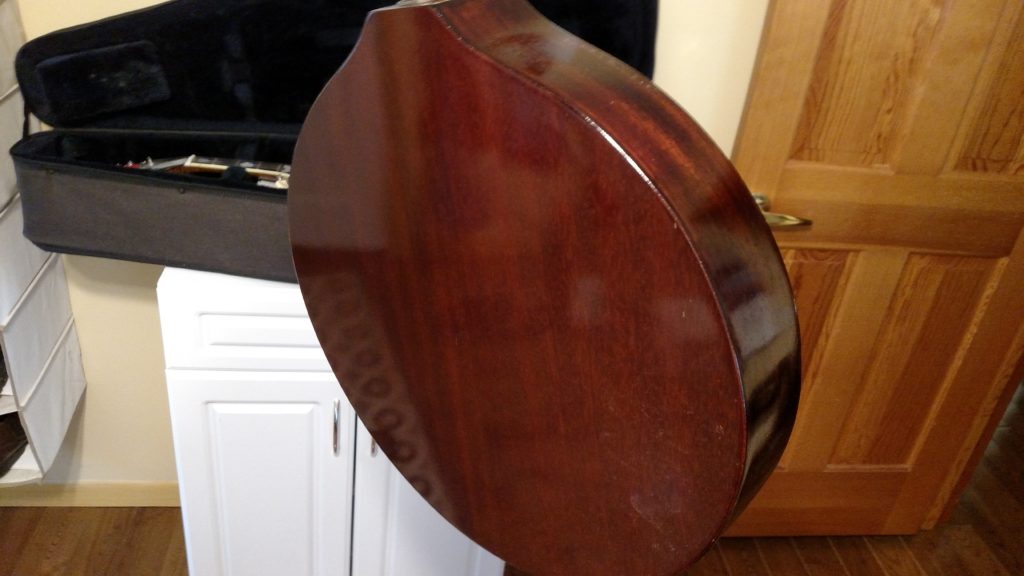
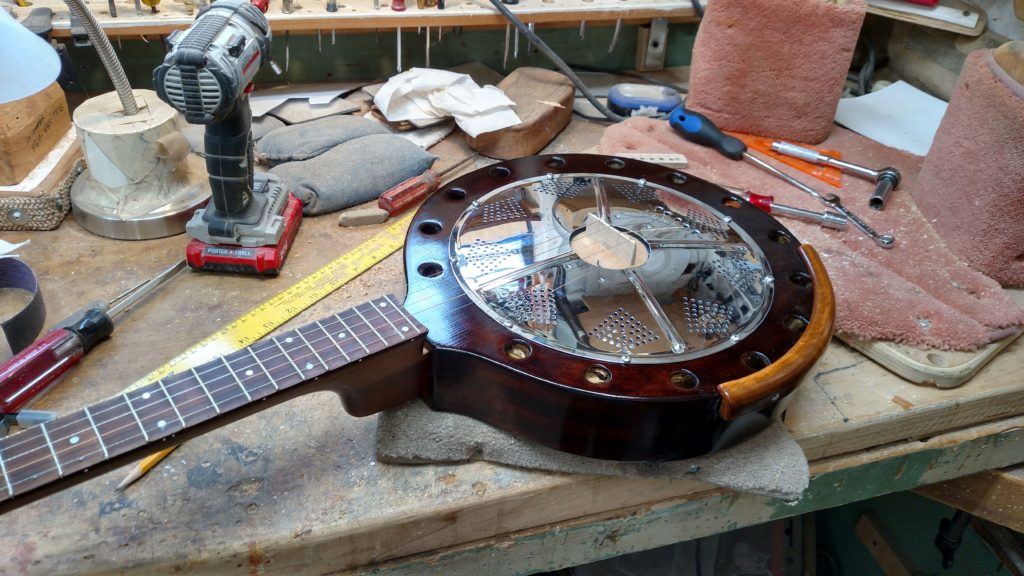
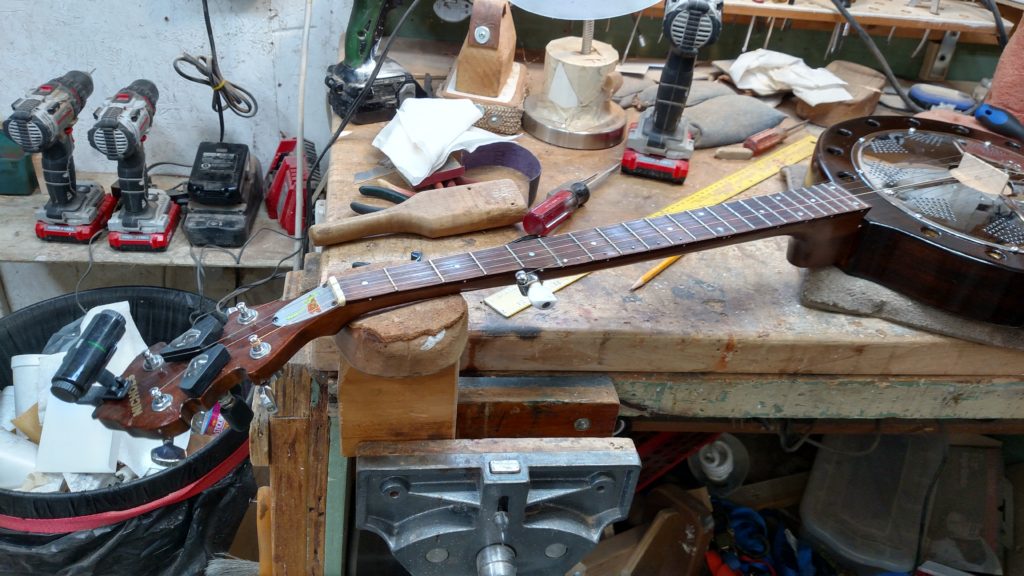
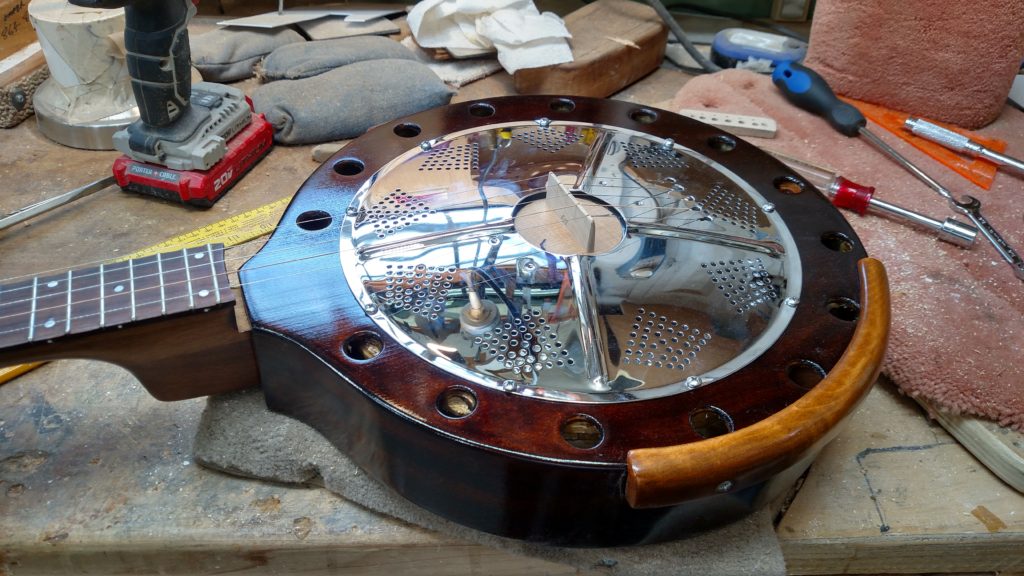
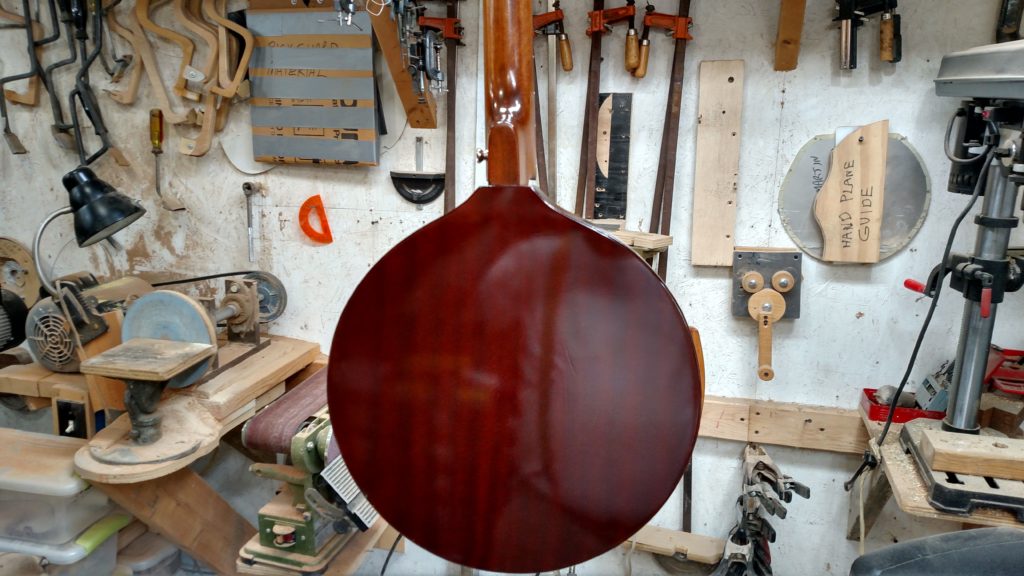
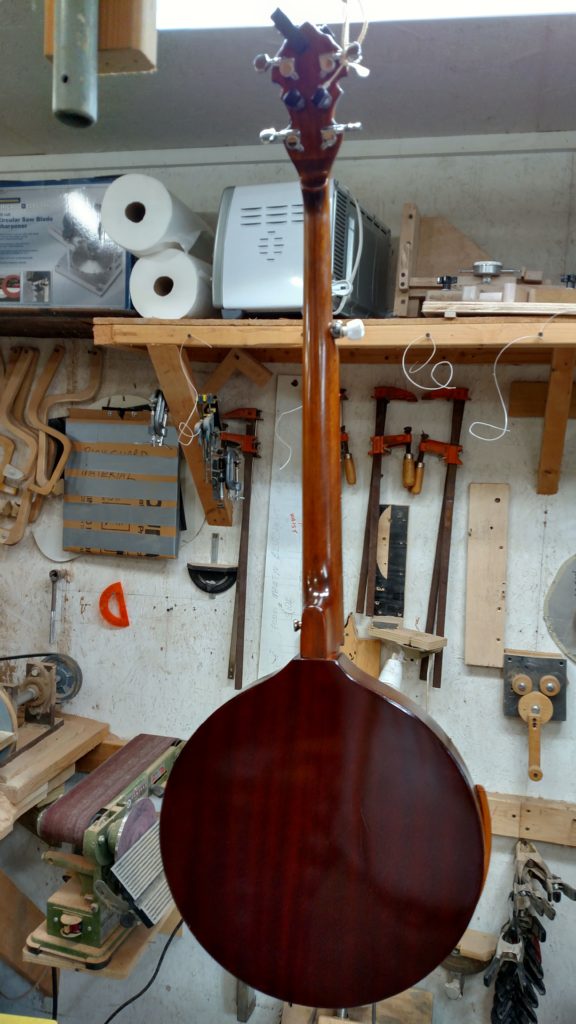
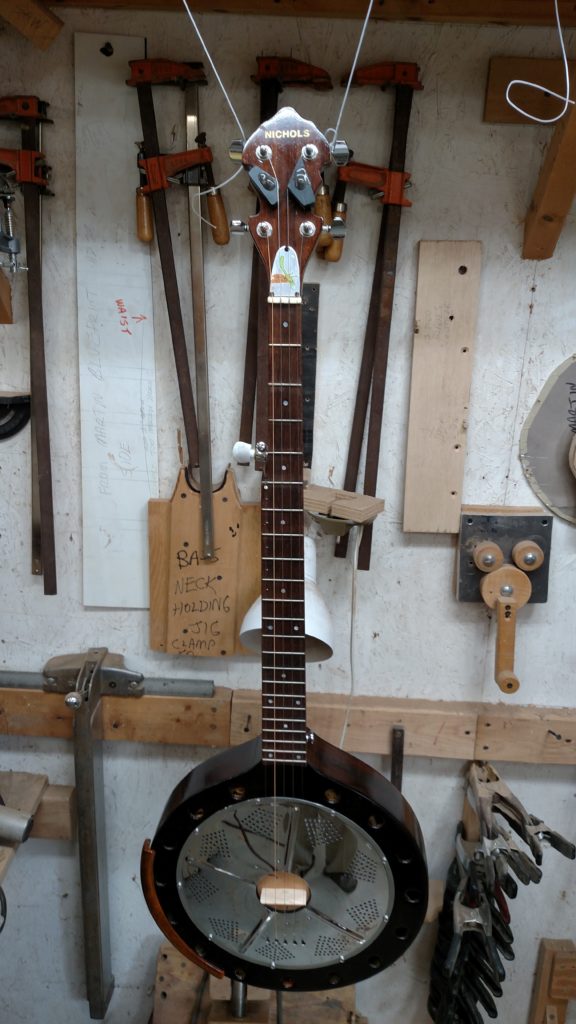
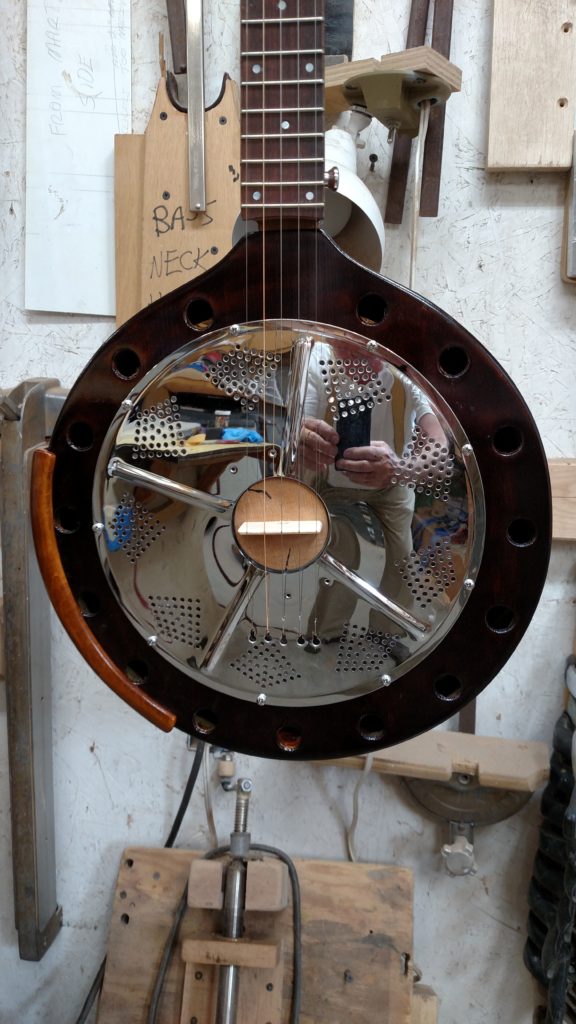
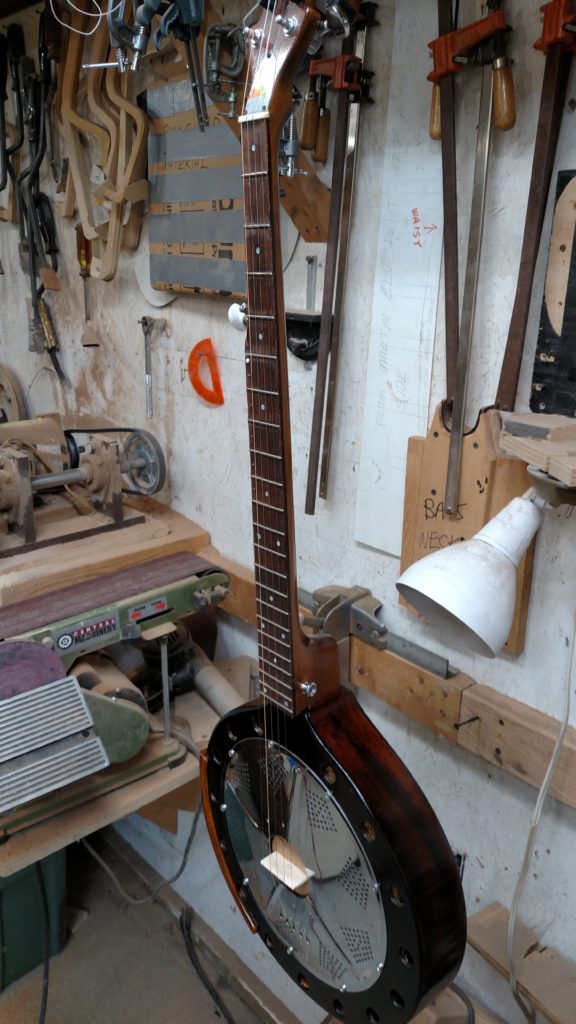
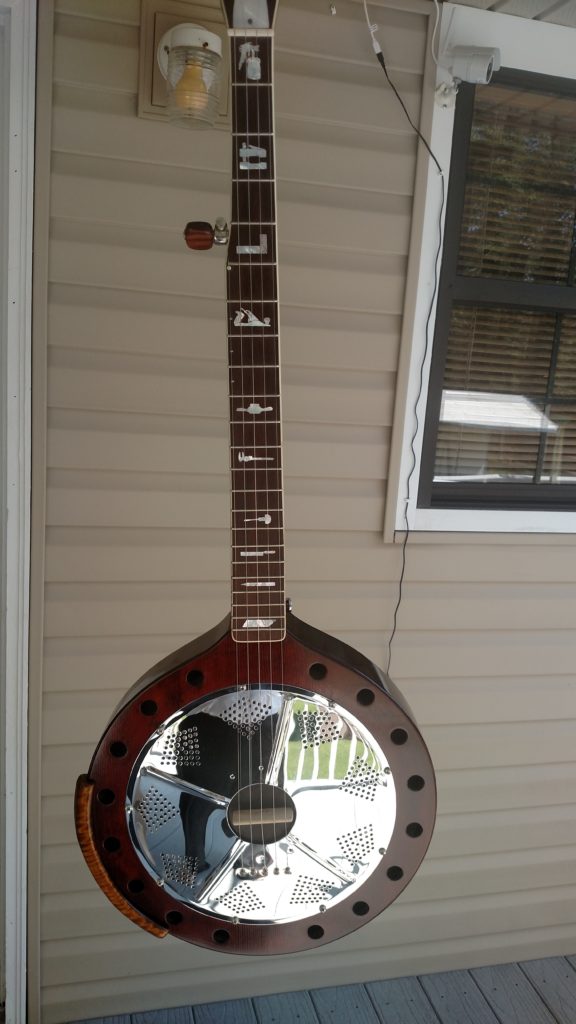
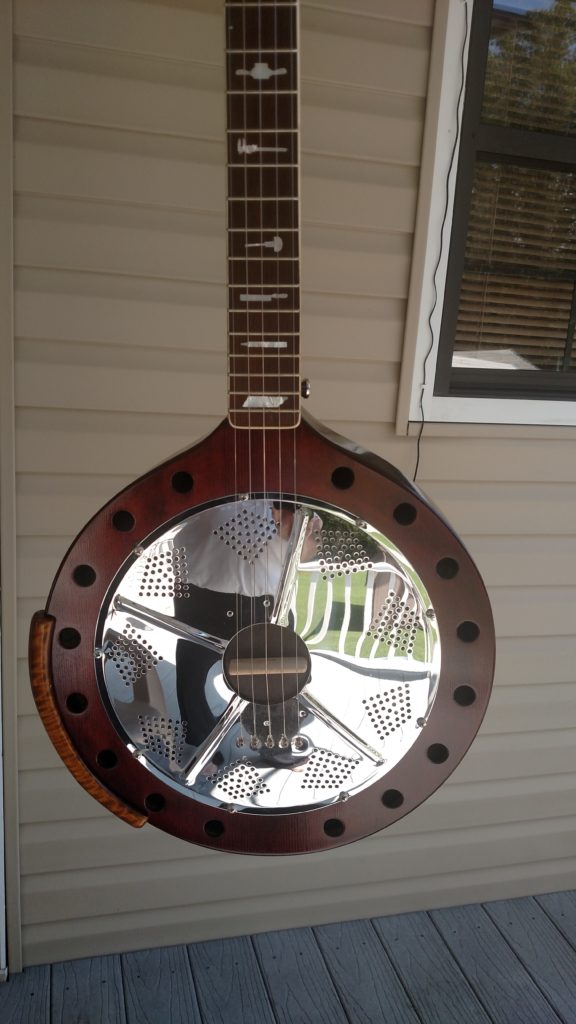
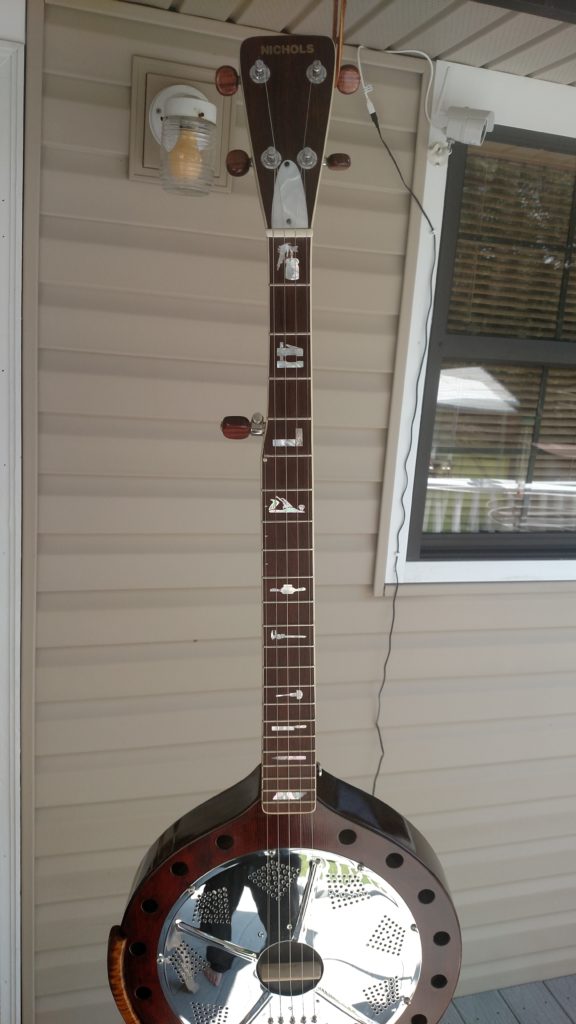
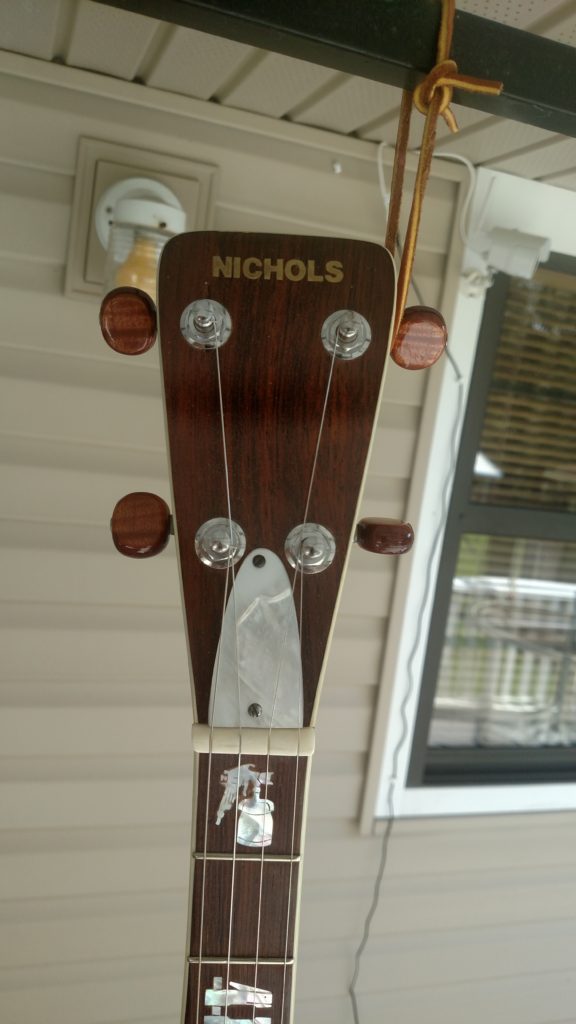
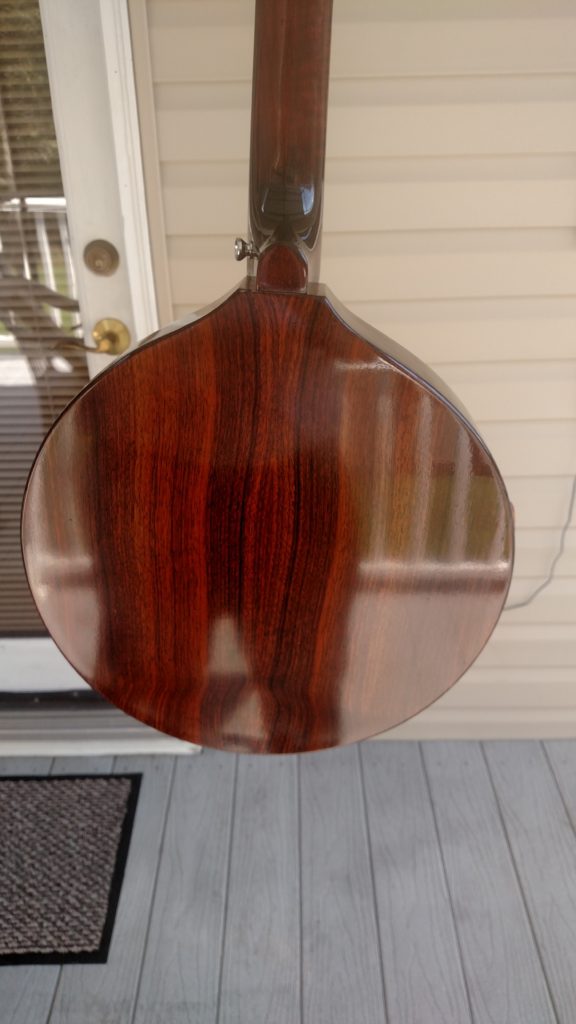
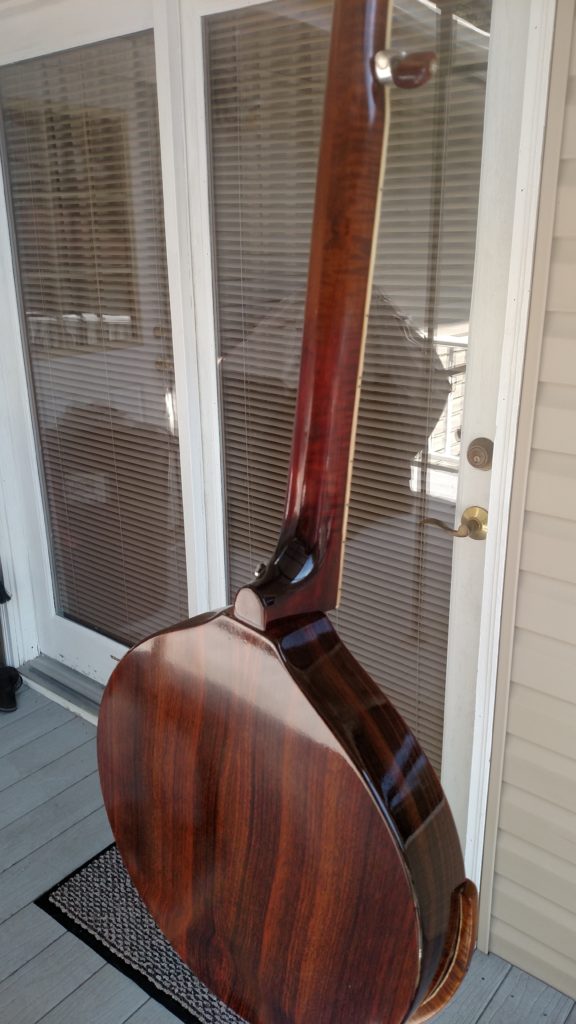
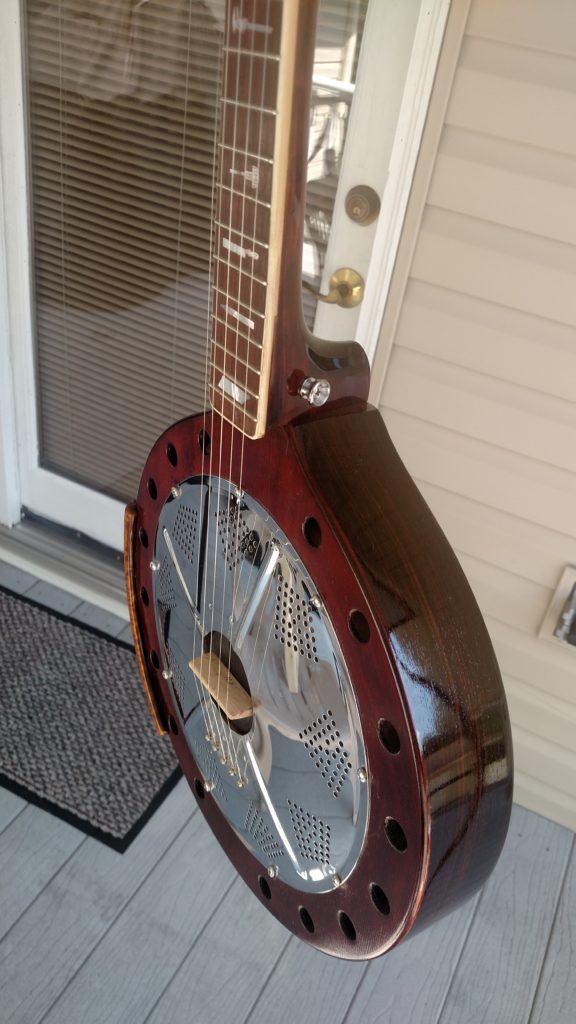
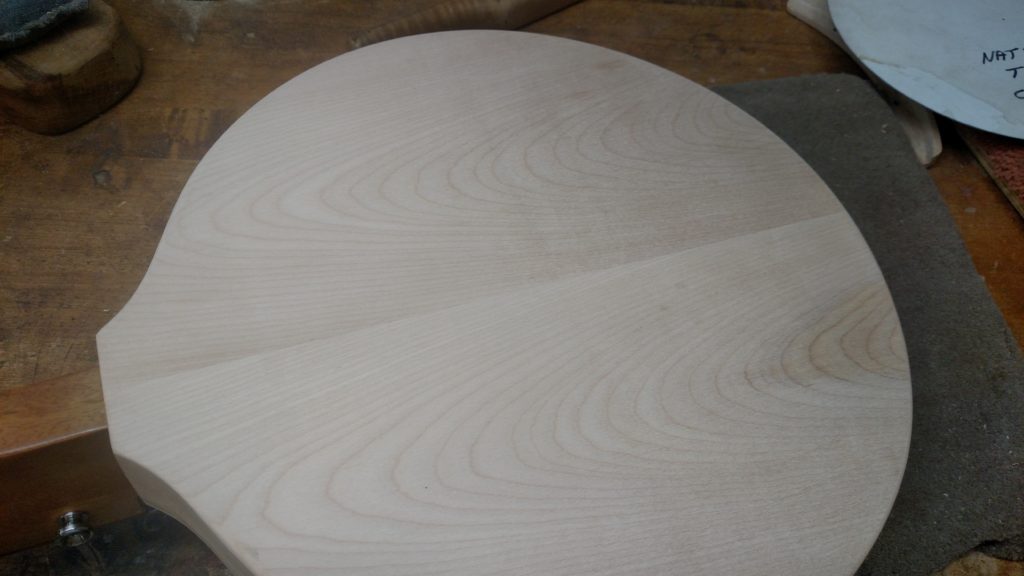
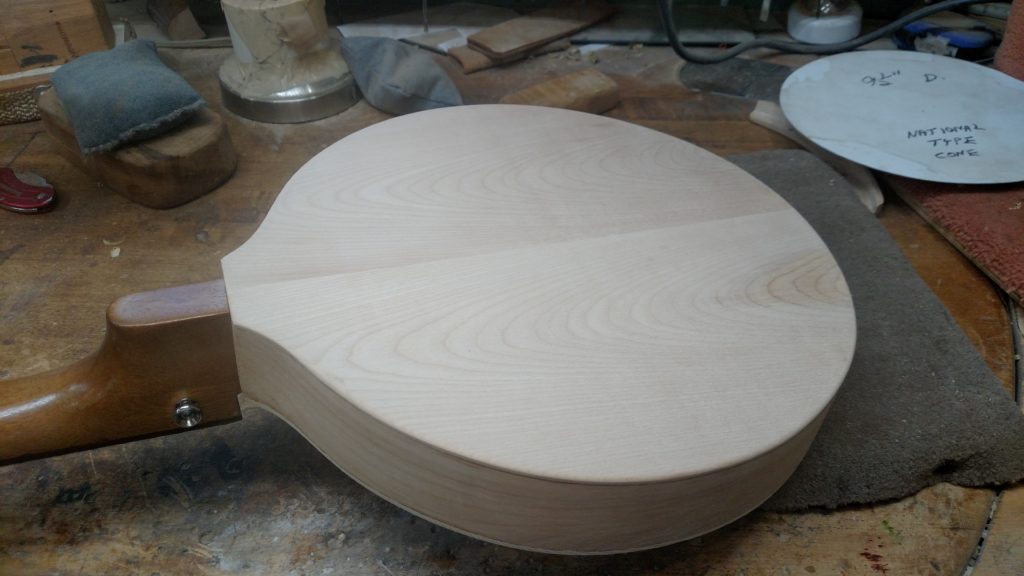
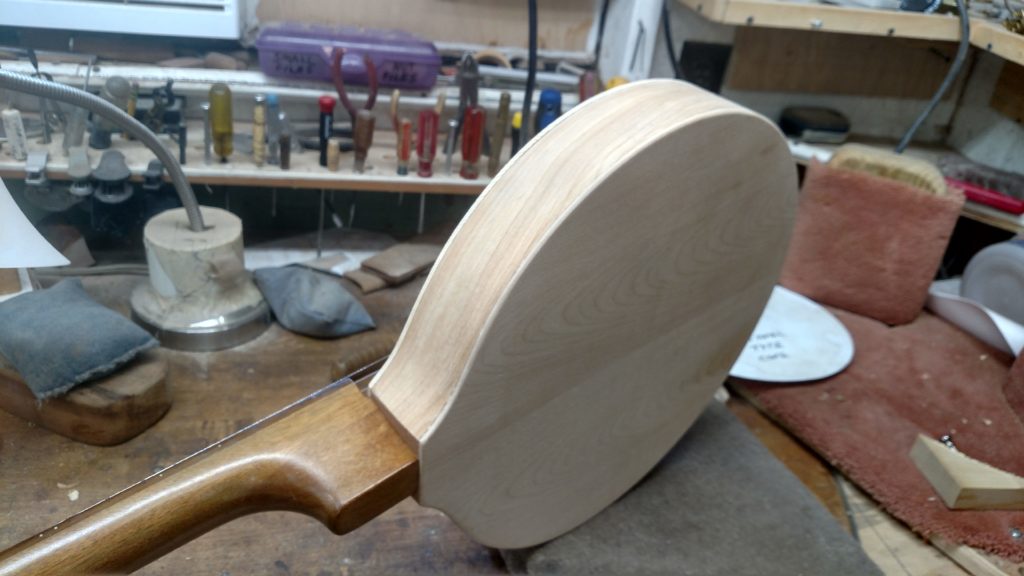
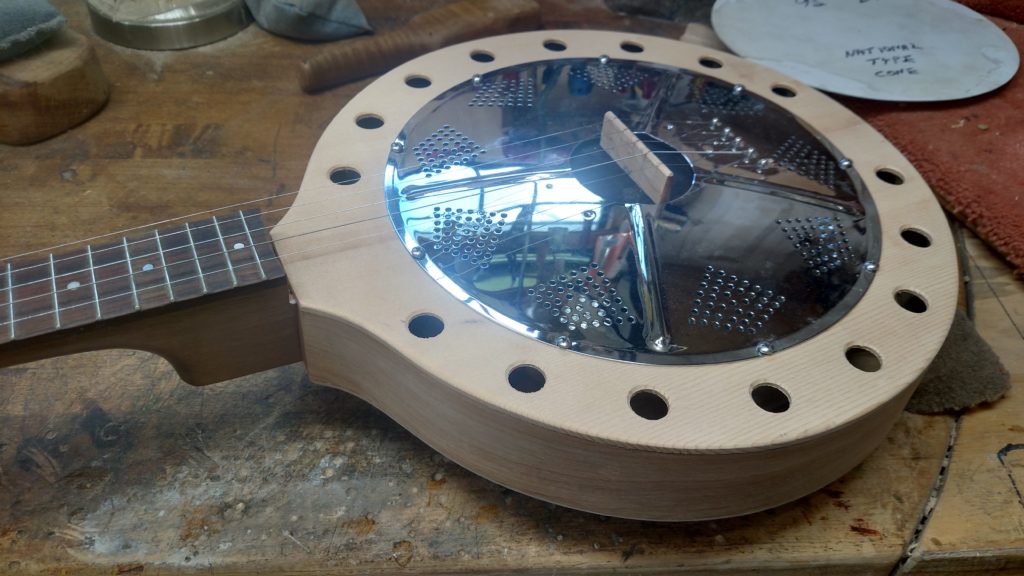
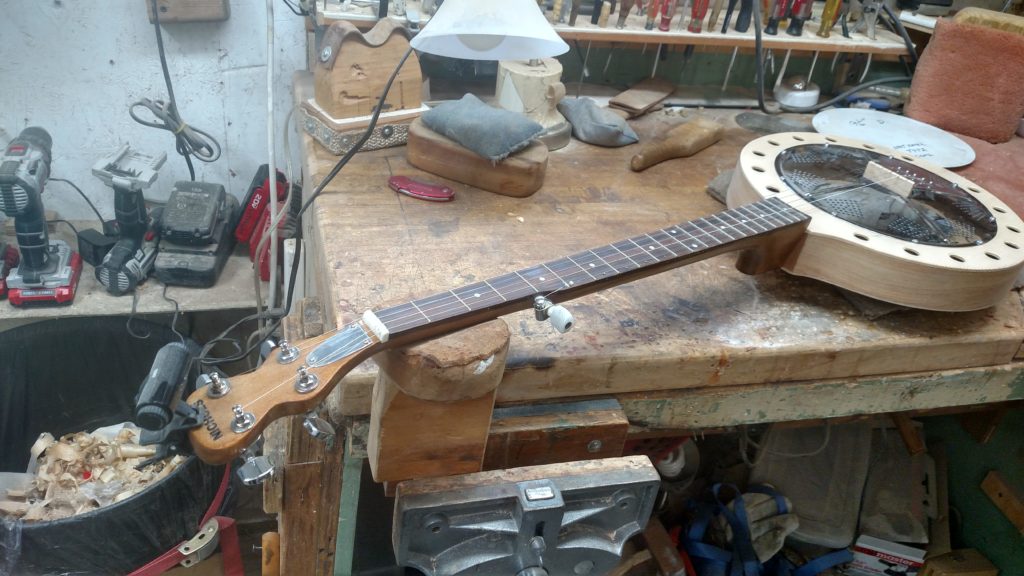
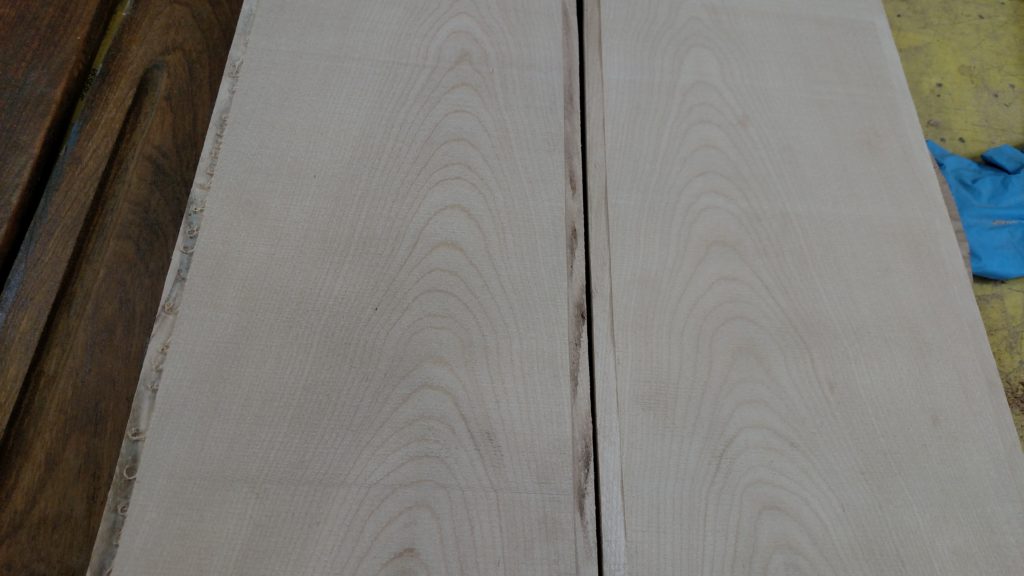
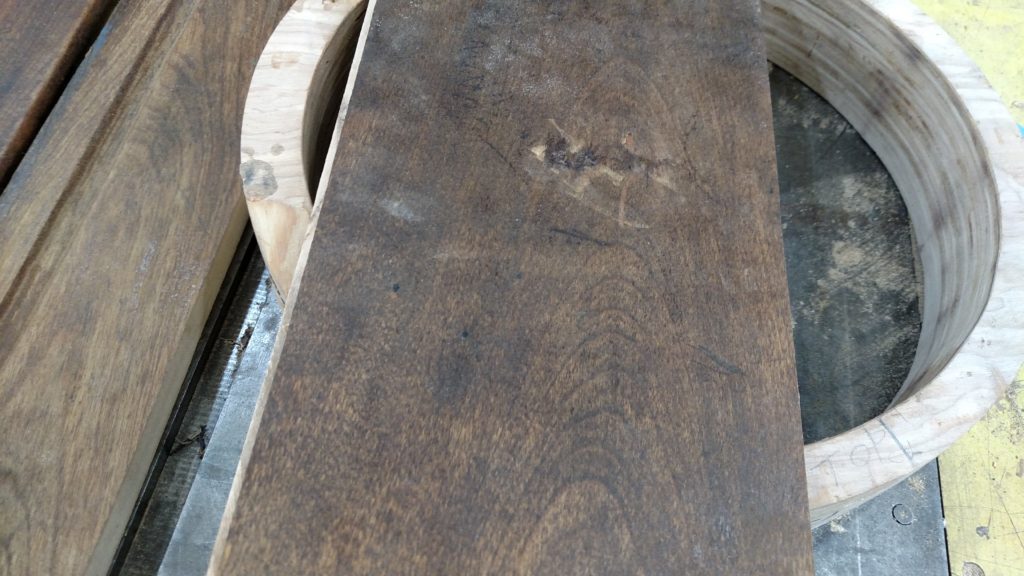
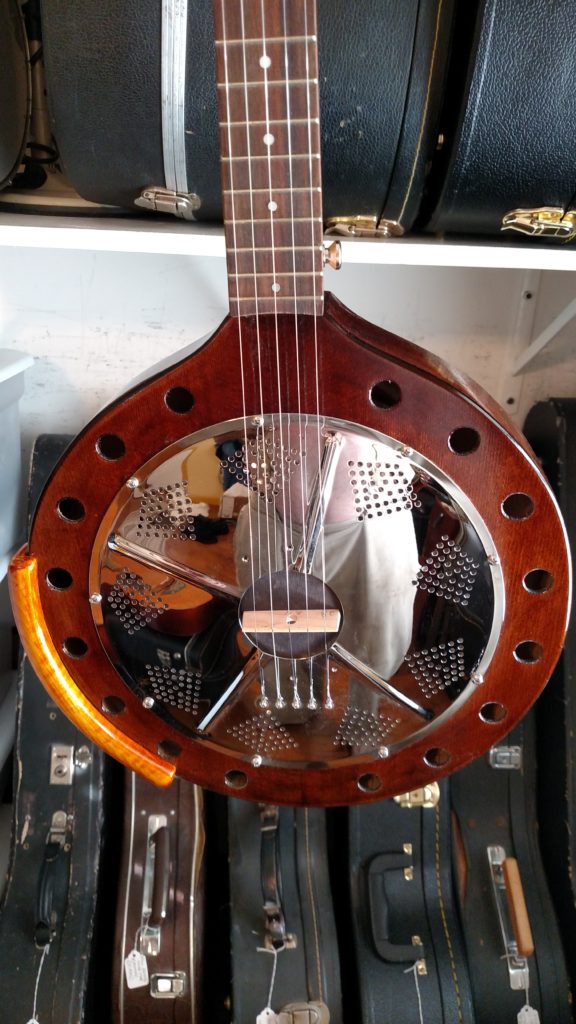
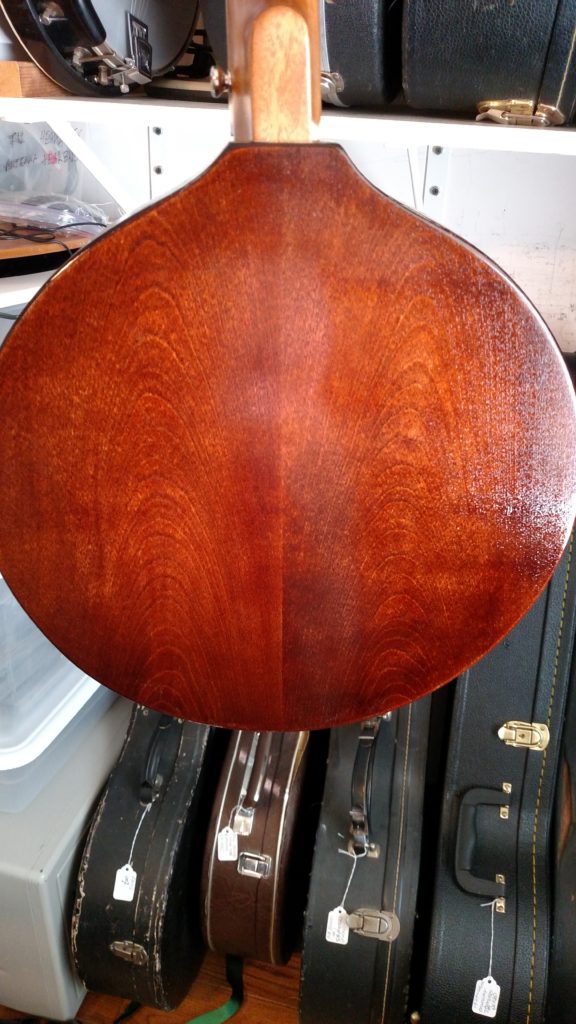
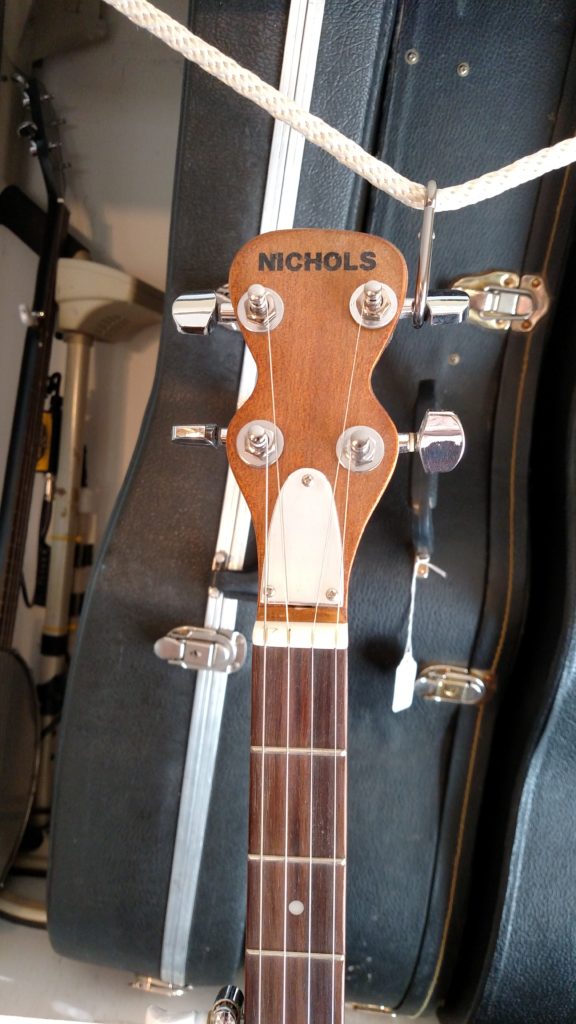
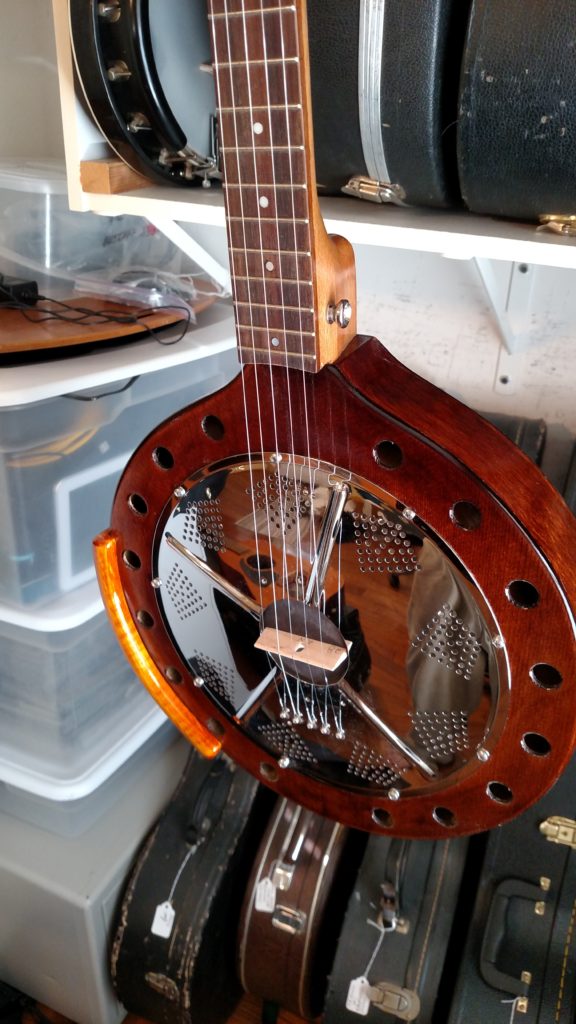
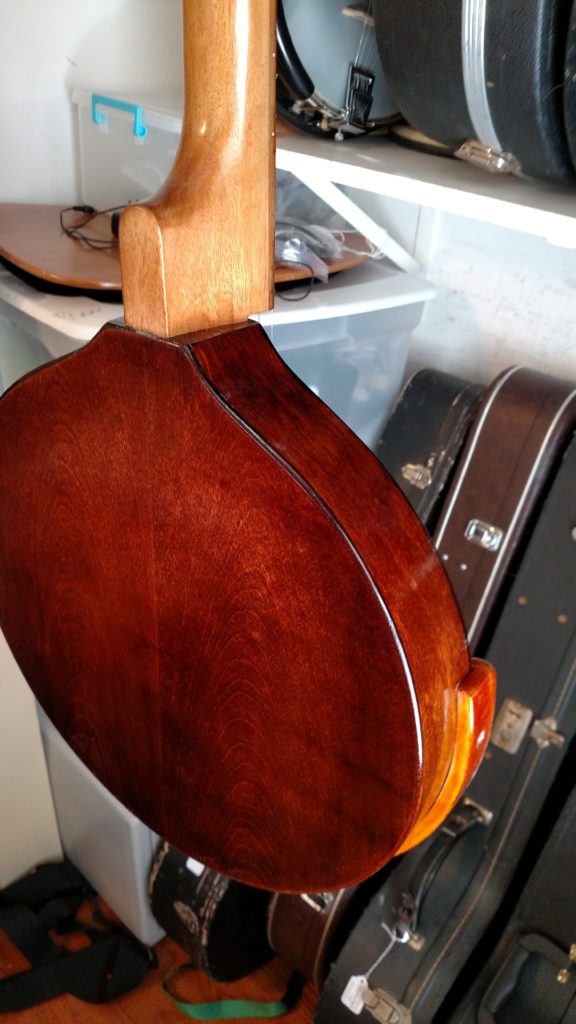
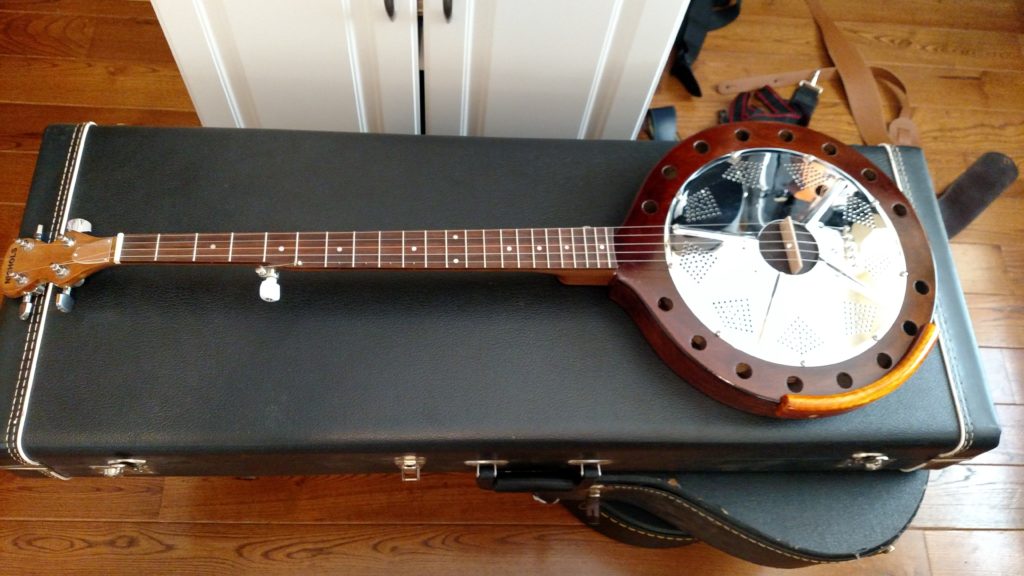
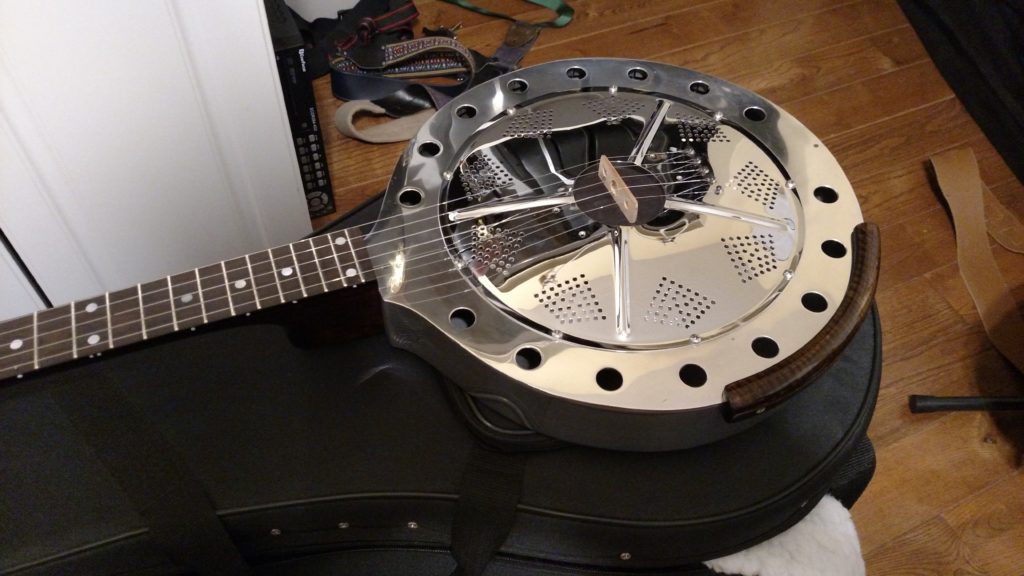
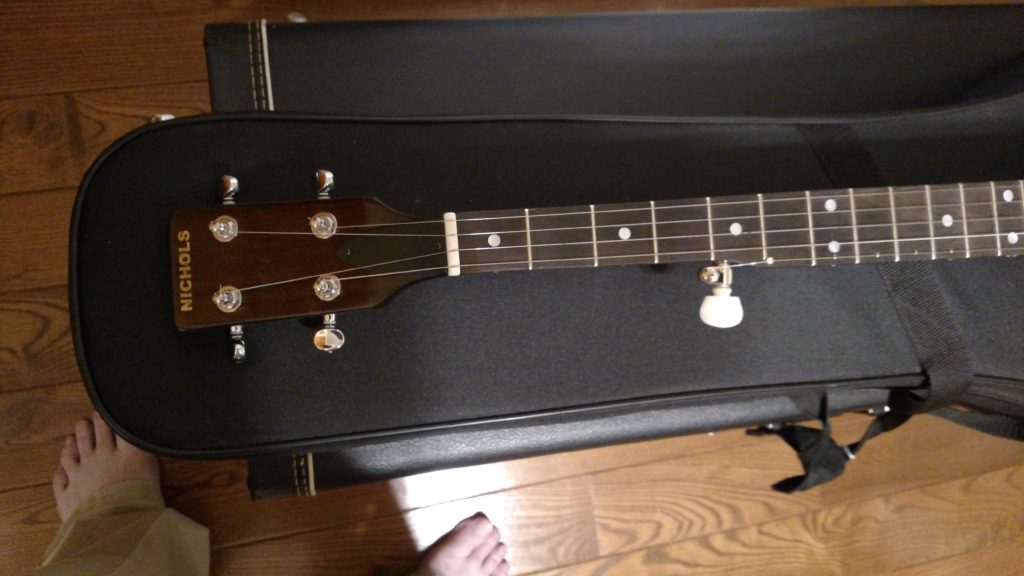
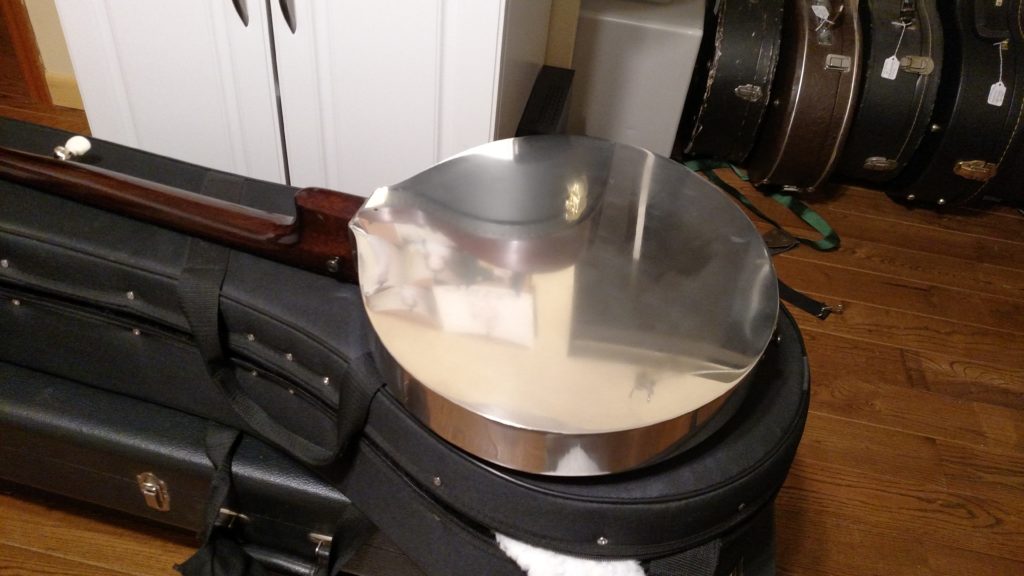
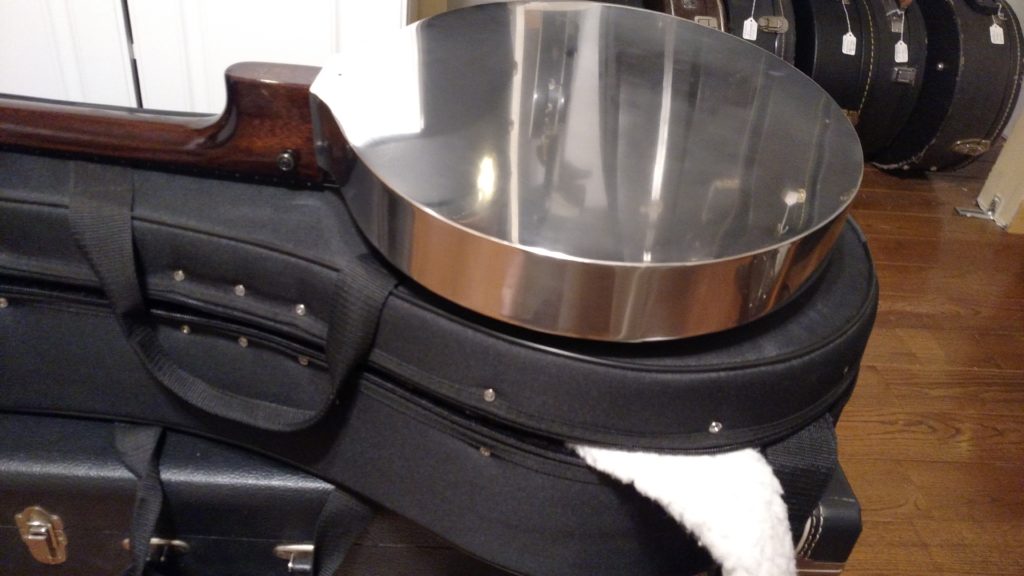
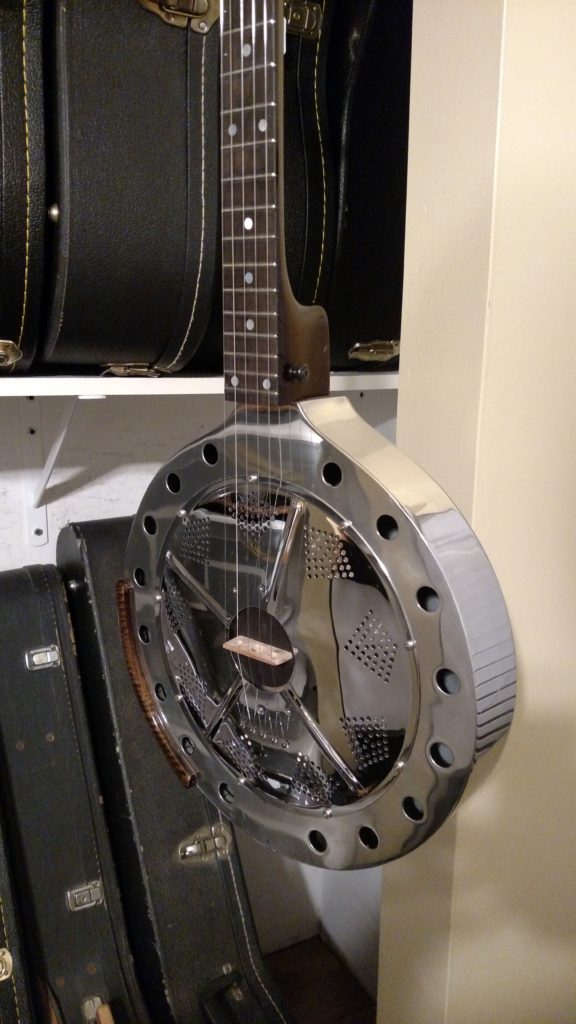
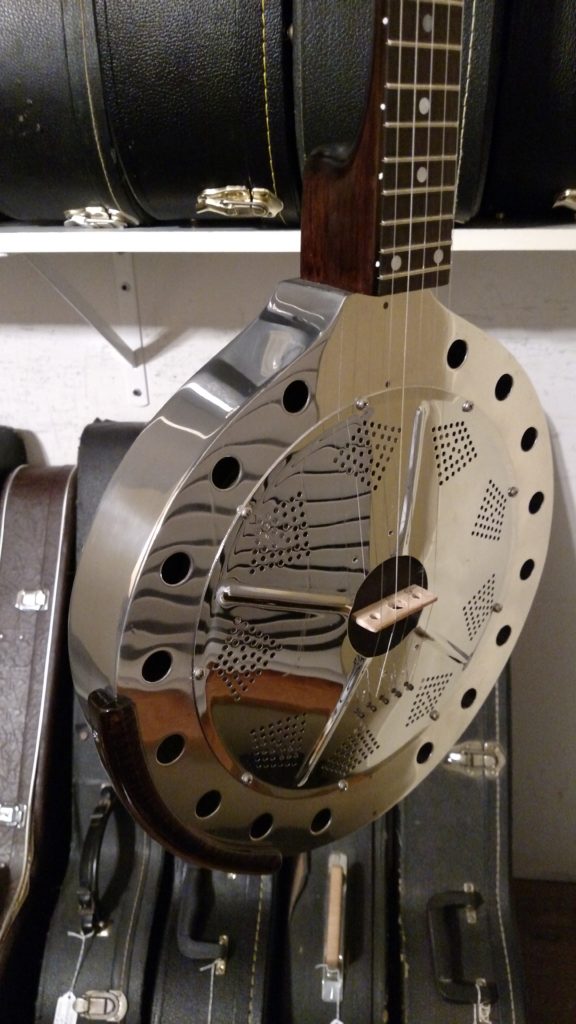
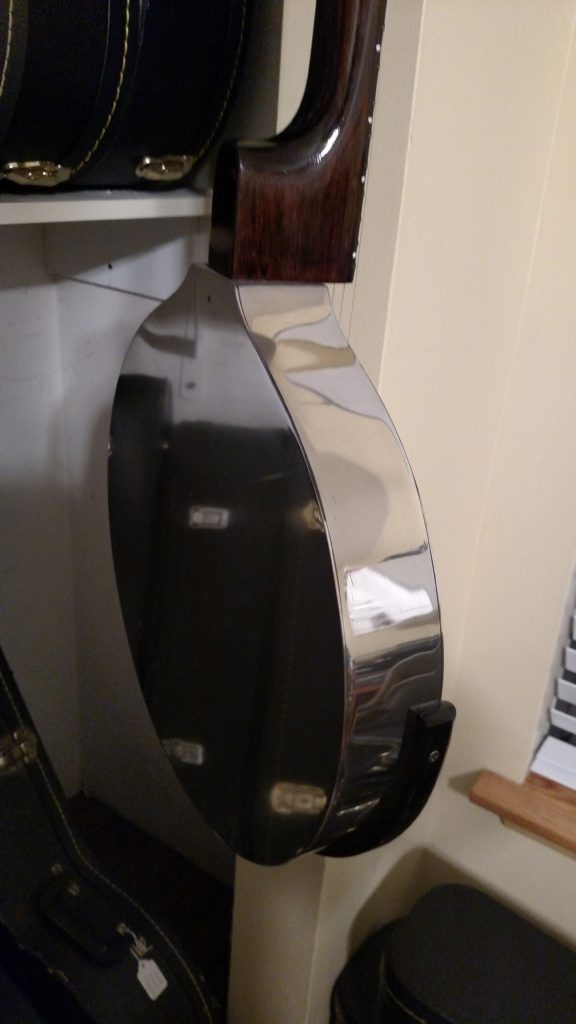
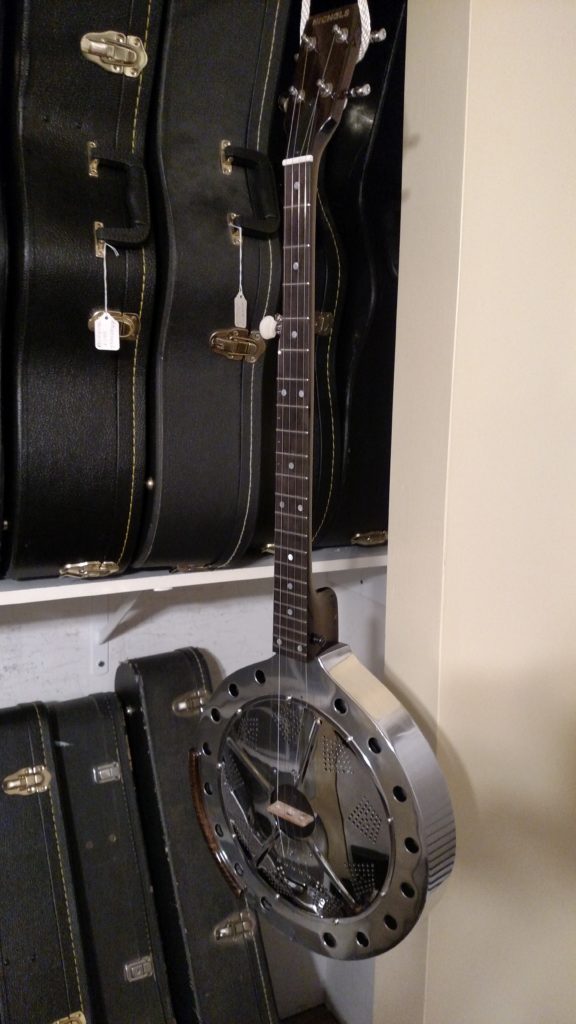
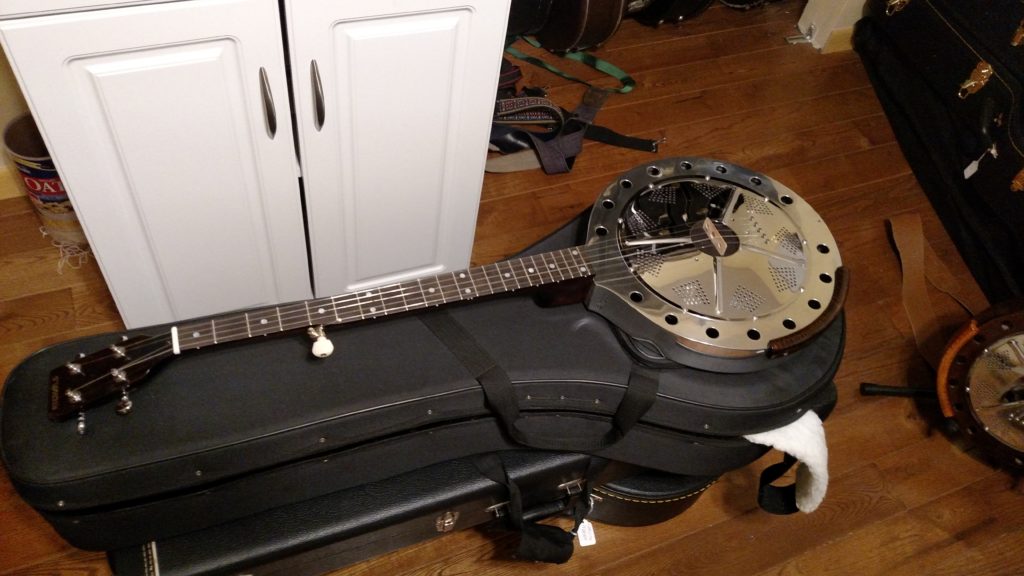
Harry Kingery my father back on 11 20 2001 finished a round guitar I have recently inherited it he never intended to sell it so he never put a price on it but for instance reasons I don’t have nay way to put a price on what I thought was a one of a kind